Sustainability of Nuclear Energy—A Critical Review from a UK Perspective
Abstract
1. Introduction
2. Sustainability
2.1. Defining Sustainability
“Capable of being maintained or continued at a certain rate or level.”
“[Development which] meets the needs of the present without compromising the ability of future generations to meet their own needs.”
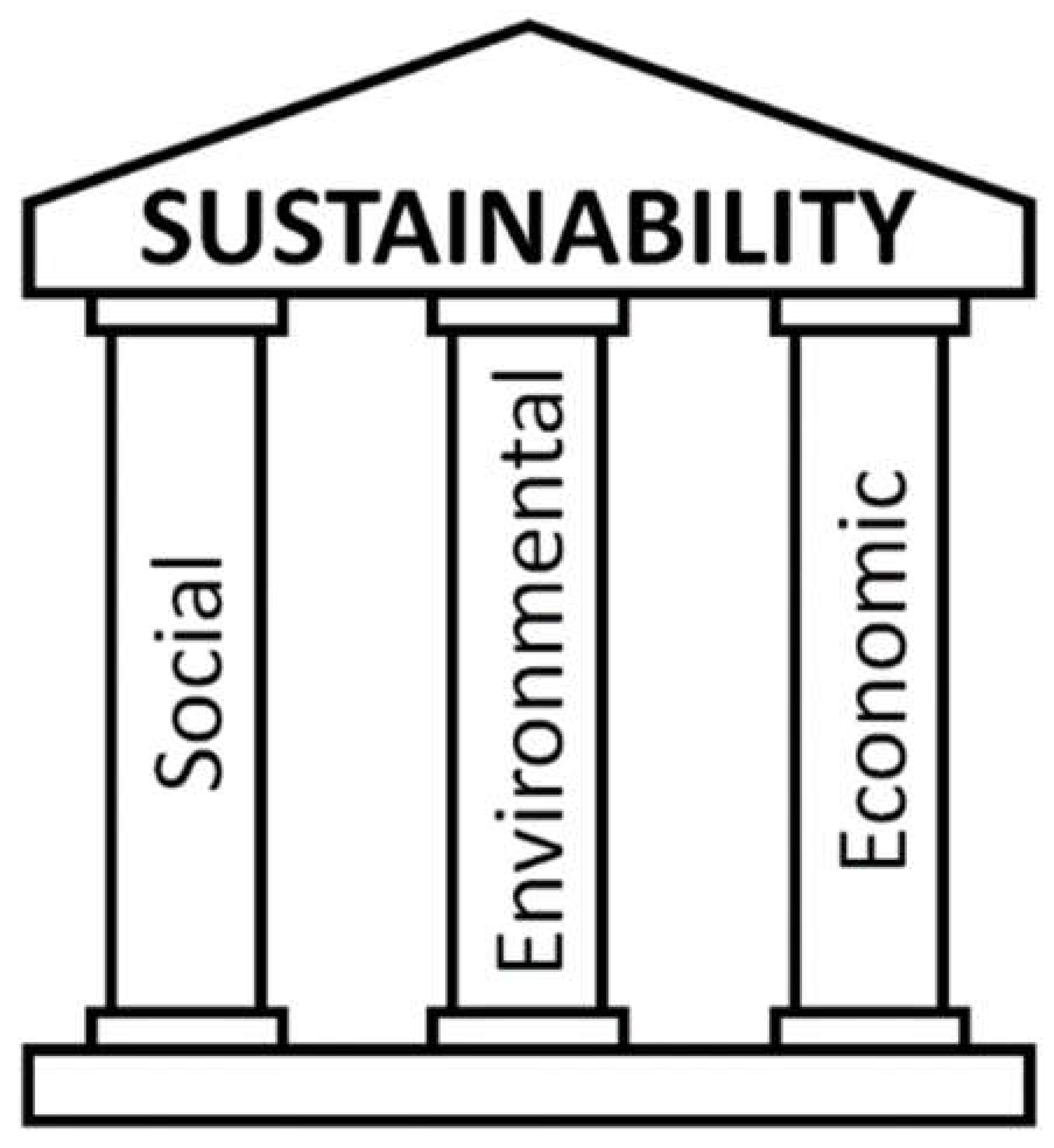
2.2. United Nations Goals
2.2.1. Sustainable Development Goals in the UK
2.2.2. Energy-Related Sustainable Development Goals
- Goal 2: Zero hunger.
- Goal 6: Clean water and sanitation.
- Goals 8, 9, and 11: Economic growth, industry, infrastructure, and cities.
- Goal 12: Responsible consumption and production.
- 7.1.1: Access to electricity and 7.1.2: Clean fuels and technology for cooking
- 7.2.1: Renewable energy share and 7.b.1: Installed renewable generating capacity
- 7.3.1: Energy intensity measured in terms of primary energy and GDP
- 7.a.1: International financial flows to developing countries in support of clean energy
2.3. Taxonomies for Sustainable Activities
- Make a substantive contribution to one of six environmental objectives:
- (1)
- Climate change mitigation.
- (2)
- Climate change adaptation.
- (3)
- Sustainable [use] and protection of water and marine resources.
- (4)
- Transition to a circular economy.
- (5)
- Pollution prevention and control.
- (6)
- Protection and restoration of biodiversity and ecosystems.
- Do no significant harm to any of the other five objectives.
- Meet a set of minimum safeguards.
“Given [limitations regarding waste], it was not possible for TEG, nor its members, to conclude that the nuclear energy value chain does not cause significant harm to other environmental objectives on the time scales in question.”
“To aid the transition to a net-zero economy, certain technologies, such as solar, wind and tidal energy are derogated from the requirement to conduct PCFs [Product Carbon Footprints] assessments on the basis that these technologies currently perform significantly below the emissions intensity threshold (For power generation this is set as the average emissions over the plant’s physical lifetime or 40 years (whichever is shorter) to be lower than 100 gCO2eq/kWh).”
“TEG recommends that more extensive technical work is undertaken on the do-no-significant-harm aspects of nuclear energy in future and by a group with in-depth technical expertise on nuclear life cycle technologies and the existing and potential environmental impacts across all objectives.”
“The analyses did not reveal any science-based evidence that nuclear energy does more harm to human health or to the environment than other electricity production technologies already included in the Taxonomy as activities supporting climate change mitigation.”
“…nuclear—as a key technology within our pathways to reach Net Zero—will be included within the UK’s Green Taxonomy, subject to consultation.”
2.4. Energy Trends
3. Sustainable Energy
3.1. Life Cycle Assessment of Energy Technologies and Need for a Level Playing Field
3.1.1. Level Playing Field
3.1.2. Life Cycle Comparisons of Energy Technologies
- Sustainable use and protection of water and marine resources;
- Transition to a circular economy, waste prevention, and recycling;
- Pollution prevention and control;
- Protection of healthy ecosystems (protection and restoration of biodiversity and ecosystems)
- GHG emissions;
- Atmospheric pollution (SOx and NOx);
- Water pollution;
- Land use;
- Water consumption and withdrawal
- Production of technological waste;
- Acidification and eutrophication potentials;
- Photochemical ozone formation potential;
- Eco-toxicity and human toxicity;
- Resource use;
- Particulate matter emissions.
“The comparison of impacts of various electricity generation technologies (e.g., oil, gas, renewables and nuclear energy) on human health and the environment, based on recent LCAs shows that the impacts of nuclear energy are mostly comparable with hydropower and the renewables, with regard to non-radiological effects.”
“For nuclear energy, its impact on water consumption and potential thermal pollution of water bodies must be appropriately addressed during the site selection, facility design and plant operation phases.”
3.2. UK Targets for Greenhouse Gas Emissions
- Renewables (i.e., wind, solar, hydro, and biomass);
- Nuclear.
Carbon Capture and Storage
3.3. Renewables
3.3.1. Hydroelectricity
- Tidal stations use daily tides to drive turbines. Existing plant capacities are mostly in the order of megawatts, with the Sihwa Lake and Rance stations (in South Korea and France, respectively) as the two exceptions, at around 250 MW each. GW-scale plants do not yet exist but have been proposed at several sites, such as the Severn estuary.
- Run-of-the-river stations utilise flows of rivers to generate power. These plants typically incorporate many small turbines, and many GW-scale plants are in operation, such as the 2.6 GW Chief Joseph Dam over the Colorado river in the USA.
- “Conventional” hydro plants require the construction of a dam to create a reservoir, the water from which can then be passed through a turbine to generate electricity. Examples include the Hoover Dam in the USA. Most hydroelectric power derives from this method, with over 200 GW-scale plants in operation or under construction worldwide.
- Pumped-storage facilities, such as Dinorwig, pump water up into reservoirs to release later when needed. This is not a source of energy but rather a storage method. Many plants with generating capacity over 1 GW exist worldwide, with storage capacity in the tens of GWh at the largest plants.
- Geography dependence;
- Safety;
- Environmental and social impacts.
3.3.2. Wind and Solar
- Intermittency;
- Low-capacity factor;
- Grid instability;
- Need for grid infrastructure expansion;
- Effect on the price of supporting power infrastructure;
- Lifecycle emissions.
Intermittency
Low-Capacity Factors
Grid Instability
Need for Grid Infrastructure Expansion
Effect on the Price of Supporting Power Infrastructure
Lifecycle Emissions
3.3.3. Biomass
3.3.4. Critical Materials
“…the scope of the manufacturing section of the Taxonomy should be extended to cover more manufacturing activities. Care must continue to be taken to review the context in which the Taxonomy is applied to ensure that it does not identify activities as green which have perverse incentives or a negative impact on other environmental objectives.”
“…an important sector both in terms of avoiding bottlenecks in the deployment of low-carbon technologies by providing the critical materials needed for low-carbon technologies, as well as the value chain link with energy-intensive manufacturing sectors.”
“…the platform [should] analyse the role [mining] plays in terms of enhancing availability of the critical materials needed for current and future technologies to create a climate neutral, circular and resource efficient economy, while sourcing raw materials in a sustainable and responsible way, with a view to consider the enabling potential of the sector. The platform is recommended to ensure that a life cycle approach is applied when assessing the different phases of the value chain for mining is applied. The rationale for applying life cycle analysis is that many metals are essential for low-carbon technologies. For example, Aluminium for lightweight cars; Copper for electrics and motors in electric vehicles, solar panels and wind turbines; Battery metals (Cobalt, Lead, Lithium, Manganese, and Nickel) for clean mobility and grid storage batteries; Zinc and Cobalt for protecting off-shore wind turbines; Silicon in solar panels; Precious metals for clean mobility and solar panels.”
4. Nuclear Energy
- Safety (including proliferation risks);
- Radioactive waste;
- Economics (including limited global uranium supply).
- The role within the electricity grid;
- Secondary fuel (e.g., hydrogen) production;
- Industrial heat provision.
4.1. Safety
4.1.1. Considerations
4.1.2. Deaths
4.1.3. Ionising Radiation
4.1.4. Summary
4.2. Radioactive Waste
4.3. Economics
4.4. The Role Within the Electricity Grid
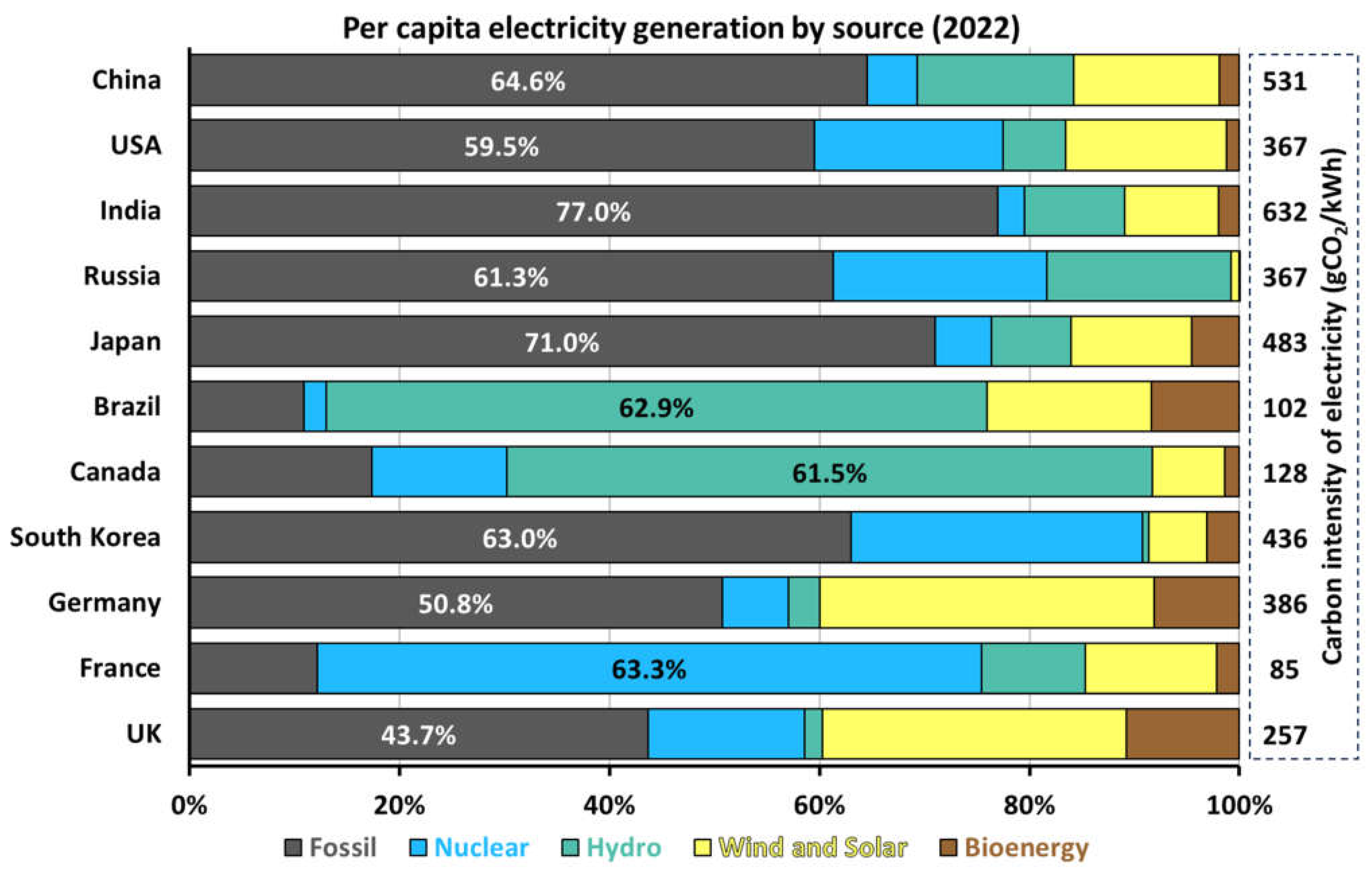
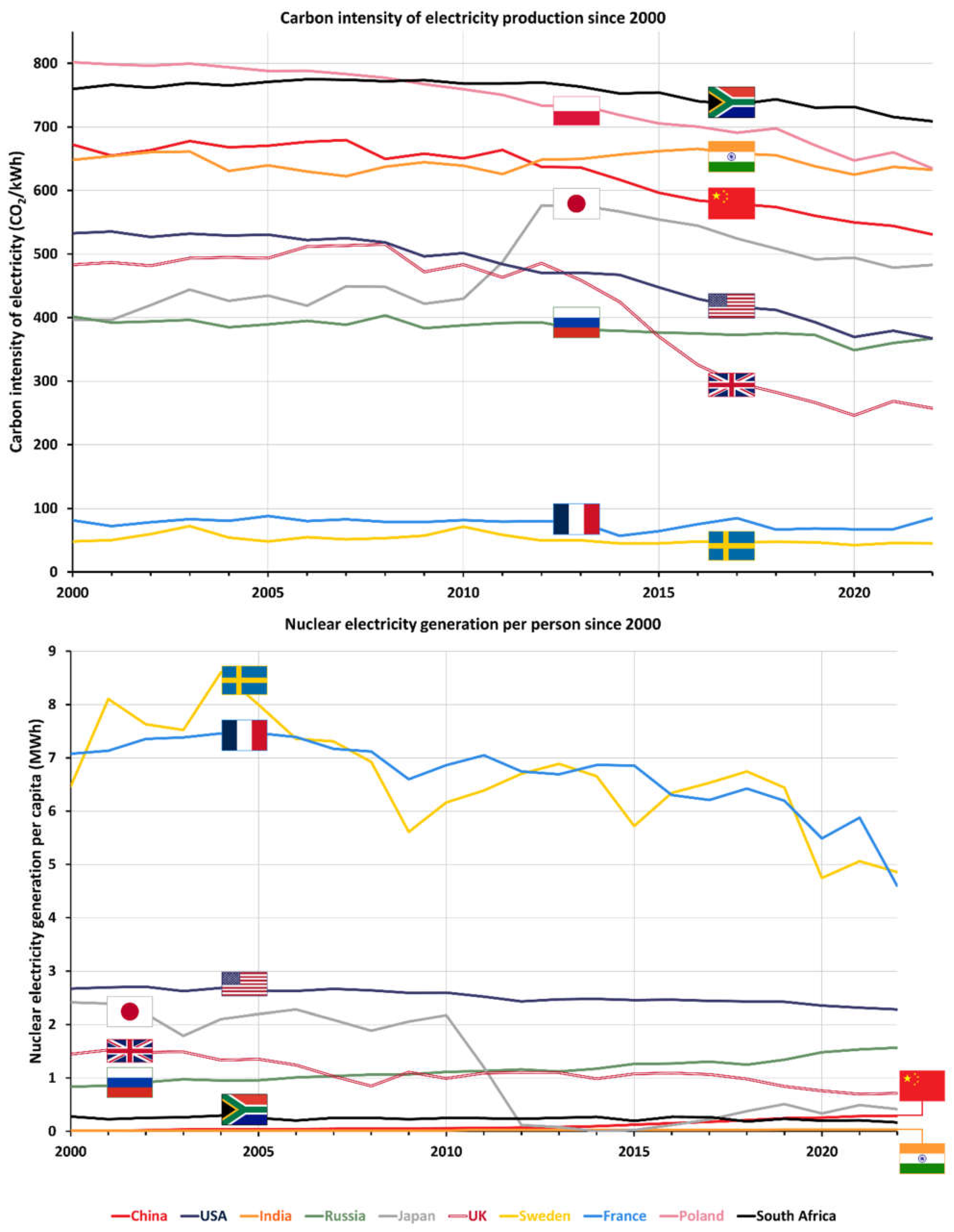
4.5. Beyond Electricity
4.5.1. Vehicles
- Upgrading the electricity grid to handle the increased electricity load.
- Increased demands on critical materials needed for use within batteries may make large-scale uptake worldwide difficult and expensive (see Section 3.3.4).
- Social impacts on the users, such as slow charging times compared to the time necessary to refuel an ICE.
- Delivery of charging infrastructure which is suitable for electric vehicle usage nationally. Many households are poorly placed to accommodate charging infrastructure for an electric vehicle.
- Current lack of suitability for powering heavy goods vehicles, aviation, and shipping.
- High taxation rates on ICE vehicles, particularly their fuel, make them artificially more expensive to run. As these vehicles are displaced, the erosion of the tax base which results will likely require that the tax will be collected by other means.
4.5.2. Hydrogen
- Storage;
- Delivery;
- Safety;
- Generation methods;
- Efficiency.
4.5.3. Hydrogen Production and Nuclear Cogeneration
“A variety of production technologies will be required to satisfy the level of anticipated demand for clean hydrogen in 2050. This is likely to include methane reformation with CCUS, biomass gasification with CCUS and electrolytic hydrogen using renewable or nuclear generated electricity.”
“The aim of the Programme is to demonstrate that HTGRs can produce high temperature heat which could be used for low-carbon hydrogen production, process heat for industrial and domestic use and cost-competitive electricity generation, in time for any potential commercial AMRs to support Net Zero by 2050.”
4.6. Nuclear Systems
5. Perspective
- All energy technologies have positive and negative aspects.
- The attractiveness of renewable energies is clear, as they perform well on low-carbon credentials and cost.
- Nuclear energy performs well on criteria where renewables do not and hence is a valuable and complementary low-carbon energy technology.
- Nuclear energy has challenges with cost, waste, and security (including nuclear proliferation) that need to be addressed to enable it to fill a role alongside renewables in future energy systems.
6. Conclusions
- An assessment of sustainability should comprise social, economic, and environmental impacts and, when used in decision making, sustainability analyses should be based on scientific evidence.
- “Affordable and clean energy” is one of the UN’s most relevant Sustainable Development Goals. However, the metrics used should be defined such that they measure real progress towards their respective sustainability goals.
- For progress to be made towards the “Climate Action” Sustainable Development Goal, all effective tools for global decarbonisation should be deployed with no further delay. Nuclear energy is one such effective tool.
- Different energy sources have different advantages and drawbacks that must be evaluated to understand their sustainability. A portfolio of complementary energy sources will be needed.
- Energy technologies should be assessed based on a “level playing field” when developing an energy strategy.
- Evidence shows that nuclear energy is sustainable and should, therefore, be recognised as such. The analysis shows that energy portfolios incorporating nuclear provide the most sustainable overall system.
- High-temperature applications of nuclear energy for reaching hard-to-decarbonise areas of society should be better understood, developed, and, where useful, deployed. High-Temperature Gas-cooled Reactor development and demonstration should, therefore, be a near-term priority action for governments.
Author Contributions
Funding
Acknowledgments
Conflicts of Interest
References
- Pörtner, H.-O.; Roberts, D.; Tignor, M.; Poloczanska, E.; Mintenbeck, K.; Alegría, A.; Craig, M.; Langsdorf, S.; Löschke, S.; Möller, V.; et al. Climate Change 2022: Impacts, Adaptation, and Vulnerability; Working Group II Contribution to the Sixth Assessment Report of the Intergovernmental Panel on Climate Change; Cambridge University Press: Cambridge, UK, 2022. [Google Scholar] [CrossRef]
- Gibon, T.; Menacho, Á.H.; Guiton, M. Carbon Neutrality in the UNECE Region: Integrated Life-Cycle Assessment of Electricity Sources. 2022. Available online: https://unece.org/sites/default/files/2022-04/LCA_3_FINALMarch2022.pdf (accessed on 8 December 2024).
- Civil Nuclear: Roadmap to 2050. 2024. Available online: https://assets.publishing.service.gov.uk/media/65aa96bc82fee9000d6f5f91/6.8610_DESNZ_Civil_Nuclear_Roadmap_report.pdf (accessed on 8 December 2024).
- Brundtland Commission. Our Common Future; Brundtland Commission: Abingdon, UK, 1987. [Google Scholar]
- Johnston, P.; Everard, M.; Santillo, D.; Robèrt, K. Reclaiming the Definition of Sustainability. Environ. Sci. Pollut. Res. 2007, 14, 60–66. [Google Scholar] [CrossRef]
- Purvis, B.; Mao, Y.; Robinson, D. Three pillars of sustainability: In search of conceptual origins. Sustain. Sci. 2019, 14, 681–695. [Google Scholar] [CrossRef]
- The Millennium Development Goals Report. 2015. Available online: https://www.un.org/millenniumgoals/2015_MDG_Report/pdf/MDG%202015%20rev%20(July%201).pdf (accessed on 8 December 2024).
- Work of the Statistical Commission Pertaining to the 2030 Agenda for Sustainable Development. 2017. Available online: https://ggim.un.org/documents/a_res_71_313.pdf (accessed on 8 December 2024).
- Tier Classification for Global SDG Indicators. 2022. Available online: https://unstats.un.org/sdgs/files/Tier%20Classification%20of%20SDG%20Indicators_30%20Nov%202022_web.pdf (accessed on 8 December 2024).
- The 169 Commandments. Economist. 26 March 2015. 8931. Available online: https://www.economist.com/leaders/2015/03/26/the-169-commandments (accessed on 8 December 2024).
- Lomborg, B. (Ed.) Prioritizing Development: A Cost Benefit Analysis of the United Nations’ Sustainable Development Goals; Cambridge University Press: Cambridge, UK, 2018. [Google Scholar]
- Sachs, J.D.; Lafortune, G.; Fuller, G.; Drumm, E. Sustainable Development Report 2023: Implementing the SDG Stimulus; Dublin University Press: Dublin, Ireland, 2023. [Google Scholar] [CrossRef]
- Gruber, M.; Andino, R. Sustainable Development Report Country Profiles; SDG Transformation Center: Paris, France, 2024; Available online: https://dashboards.sdgindex.org/profiles (accessed on 8 December 2024).
- Analysis: Record Opposition to Climate Action by UK’s Right-Leaning Newspapers in 2023. Carbon Brief. Available online: https://www.carbonbrief.org/analysis-record-opposition-to-climate-action-by-uks-right-leaning-newspapers-in-2023/ (accessed on 8 December 2024).
- Dunne, P. Correspondence: P. Dunne to R. Suank. 2023. Available online: https://committees.parliament.uk/publications/41599/documents/205404/default/ (accessed on 8 December 2024).
- Voluntary National Review of Progress Towards the Sustainable Development Goals. 2019. Available online: https://assets.publishing.service.gov.uk/government/uploads/system/uploads/attachment_data/file/818212/UKVNR-web-accessible1.pdf (accessed on 8 December 2024).
- Jukema, G.D.; Ramaekers, P.; Berkhout, P. De Nederlandse Agrarische Sector in Internationaal Verband; Wageningen University & Research: Wageningen, The Netherlands, 2001. [Google Scholar] [CrossRef]
- Alix, A.; Bellet, L.; Trommsdorff, C.; Audureau, I. Reducing the Greenhouse Gas Emissions of Water Reducing and Sanitation Services; IWA Publishing: London, UK, 2022. [Google Scholar] [CrossRef]
- World Nuclear Association. Nuclear Fuel Cycle: Supply of Uranium. Available online: https://world-nuclear.org/information-library/nuclear-fuel-cycle/uranium-resources/supply-of-uranium (accessed on 8 December 2024).
- Poinssot, C.; Boullis, B.; Bourg, S. Role of Recycling in Advanced Nuclear Fuel Cycles; Elsevier Ltd.: Amsterdam, The Netherlands, 2015. [Google Scholar]
- Eynde, G.V.D.; Pedoux, S.; Trtilek, R.; Fritz, L.; Evans, C.; Mathonnière, G.; Werf, J.V.; Lucibello, P.; Suzuki, K.; Sano, T.; et al. Strategies and Considerations for the Back End of the Fuel Cycle. 2021. Available online: https://www.oecd-nea.org/jcms/pl_55928/strategies-and-considerations-for-the-back-end-of-the-fuel-cycle (accessed on 8 December 2024).
- Taylor, R.; Bodel, W.; Stamford, L.; Butler, G. A Review of Environmental and Economic Implications of Closing the Nuclear Fuel Cycle—Part One: Wastes and Environmental Impacts. Energies 2022, 15, 1433. [Google Scholar] [CrossRef]
- Serp, J.; Poinssot, C.; Bourg, S. Assessment of the anticipated environmental footprint of future nuclear energy systems. Evidence of the beneficial effect of extensive recycling. Energies 2017, 10, 1445. [Google Scholar] [CrossRef]
- UK Data for the Sustainable Development Goals, UK Sustainability Development Goals. Available online: https://sdgdata.gov.uk/ (accessed on 8 December 2024).
- Climate Change Act 2008. 2008. Available online: https://www.legislation.gov.uk/ukpga/2008/27 (accessed on 8 December 2024).
- Taxonomy: Final Report of the Technical Expert Group on Sustainable Finance. 2020. Available online: https://ec.europa.eu/info/sites/default/files/business_economy_euro/banking_and_finance/documents/200309-sustainable-finance-teg-final-report-taxonomy_en.pdf (accessed on 8 December 2024).
- Taxonomy Report: Technical Annex. 2020. Available online: https://ec.europa.eu/info/sites/default/files/business_economy_euro/banking_and_finance/documents/200309-sustainable-finance-teg-final-report-taxonomy-annexes_en.pdf (accessed on 8 December 2024).
- Management of Spent Nuclear Fuel and Its Waste; Publications Office of the European Union: Luxembourg, 2014. [CrossRef]
- Technical Assessment of Nuclear Energy with Respect to the ‘Do NO Significant Harm’ Criteria of Regulation (EU) 2020/852 (‘Taxonomy Regulation’). 2021. Available online: https://ec.europa.eu/info/sites/default/files/business_economy_euro/banking_and_finance/documents/210329-jrc-report-nuclear-energy-assessment_en.pdf (accessed on 8 December 2024).
- UK Government. Mobilising Green Investment—2023 Green Finance Strategy; UK Government: London, UK, 2023.
- Our World in Data, Global Change Data Lab. Available online: https://ourworldindata.org/ (accessed on 8 December 2024).
- Energy Use per Capita vs. Share in Extreme Poverty, Our World in Data. Available online: https://ourworldindata.org/grapher/energy-use-per-capita-vs-share-of-population-in-extreme-poverty (accessed on 8 December 2024).
- Our World in Data. Energy Use per Person. Available online: https://ourworldindata.org/grapher/per-capita-energy-use (accessed on 8 December 2024).
- Our World in Data. Energy Consumption by Source. Available online: https://ourworldindata.org/grapher/energy-consumption-by-source-and-country?stackMode=absolute (accessed on 8 December 2024).
- China’s New Coal Power Spree Continues as More Provinces Jump on the Bandwagon Key Findings. 2023. Available online: https://energyandcleanair.org/wp/wp-content/uploads/2023/08/CREA_GEM_China-coal-power-briefing-2023H1_08.2023.pdf (accessed on 8 December 2024).
- Our World in Data. Annual CO2 Emissions. Available online: https://ourworldindata.org/grapher/annual-co2-emissions-per-country (accessed on 8 December 2024).
- IAEA (International Atomic Energy Agency). Reactors Under Construction by Country. 2023. Available online: https://pris.iaea.org/pris/worldstatistics/underconstructionreactorsbycountry.aspx (accessed on 8 December 2024).
- World Energy Outlook 2022. 2022. Available online: https://iea.blob.core.windows.net/assets/830fe099-5530-48f2-a7c1-11f35d510983/WorldEnergyOutlook2022.pdf (accessed on 8 December 2024).
- Global Warming of 1.5 °C. 2019. Available online: https://www.ipcc.ch/sr15/ (accessed on 8 December 2024).
- UNECE. Use of Nuclear Fuel Resources for Sustainable Development—Entry Pathways, 2021; pp. 1–155. Available online: https://unece.org/sites/default/files/2021-03/UNECEUseofnuclearfuelresourcesforsustainabledevelopment_Final_0.pdf (accessed on 8 December 2024).
- ISO 14040; Environmental Management—Life Cycle Assessment—Principles and Framework. International Organisation for Standardisation: Geneva, Switzerland, 2006.
- ISO 14044; Environmental Management—Life Cycle Assessment—Requirements and Guidelines. International Organisation for Standardisation: Geneva, Switzerland, 2006.
- Sovacool, B.K. Valuing the greenhouse gas emissions from nuclear power: A critical survey. Energy Policy 2008, 36, 2950–2963. [Google Scholar] [CrossRef]
- Lenzen, M. Life cycle energy and greenhouse gas emissions of nuclear energy: A review. Energy Convers. Manag. 2008, 49, 2178–2199. [Google Scholar] [CrossRef]
- Nuclear Energy: Combating Climate Change. 2015. Available online: https://www.oecd-nea.org/upload/docs/application/pdf/2019-12/7208-climate-change-2015.pdf (accessed on 8 December 2024).
- Warner, E.; Heath, G. Life Cycle Greenhouse Gas Emissions of Nuclear Electricity Generation. J. Ind. Ecol. 2012, 16, S73–S92. [Google Scholar] [CrossRef]
- Poinssot, C.; Bourg, S.; Ouvrier, N.; Combernoux, N.; Rostaing, C.; Vargas-Gonzalez, M.; Bruno, J. Assessment of the environmental footprint of nuclear energy systems. Comparison between closed and open fuel cycles. Energy 2014, 69, 199–211. [Google Scholar] [CrossRef]
- Stamford, L.; Azapagic, A. Life cycle sustainability assessment of electricity options for the UK. Int. J. Energy Res. 2012, 36, 1263–1290. [Google Scholar] [CrossRef]
- Schlömer, S.; Bruckner, T.; Fulton, L.; Hertwich, E.; McKinnon, A.; Perczyk, D.; Roy, J.; Schaeffer, R.; Sims, R.; Smith, P.; et al. Annex III: Technology-specific Cost and Performance Parameters. In Climate Change 2014: Mitigation of Climate Change; Contribution of Working Group III to the Fifth Assessment Report of the Intergovernmental Panel on Climate Change; Intergovernmental Panel on Climate Change: Geneva, Switzerland, 2014; pp. 1329–1356. [Google Scholar]
- Treyer, K.; Bauer, C. The environmental footprint of UAE’s electricity sector: Combining life cycle assessment and scenario modeling. Renew. Sustain. Energy Rev. 2016, 55, 1234–1247. [Google Scholar] [CrossRef]
- Collins, E.D.; DelCul, G.D.; Spencer, B.B.; Jubin, R.T.; Maher, C.; Kim, I.T.; Lee, H.; Federov, Y.S.; Saprykin, V.F.; Beznosyuk, V.I.; et al. State-of-the-Art Report on the Progress of Nuclear Fuel Cycle Chemistry. 2018. Available online: https://www.oecd-nea.org/jcms/pl_14970/state-of-the-art-report-on-the-progress-of-nuclear-fuel-cycle-chemistry?details=true (accessed on 8 December 2024).
- Taylor, R. (Ed.) Reprocessing and Recycling of Spent Nuclear Fuel; Woodhead Publishing Limited: Sawston, UK, 2015. [Google Scholar]
- Nash, K.; Lumetta, G. (Eds.) Advanced Separation Techniques for Nuclear Fuel Reprocessing and Radioactive Waste Treatment; Woodhead Publishing Limited: Sawston, UK, 2011. [Google Scholar]
- Updated Energy and Emissions Projections 2018. 2019. Available online: https://assets.publishing.service.gov.uk/government/uploads/system/uploads/attachment_data/file/794590/updated-energy-and-emissions-projections-2018.pdf (accessed on 8 December 2024).
- EIA (US Energy Information Administration). Carbon Dioxide Emissions Coefficients by Fuel. 2022. Available online: https://www.eia.gov/environment/emissions/co2_vol_mass.php (accessed on 27 March 2023).
- Updated Energy and Emissions Projections 2021 to 2040. 2022. Available online: https://assets.publishing.service.gov.uk/government/uploads/system/uploads/attachment_data/file/1111625/updated-energy-and-emissions-projections-2021-2040.pdf (accessed on 8 December 2024).
- Kraan, O.; Kramer, G.J.; Nikolic, I.; Chappin, E.; Koning, V. Why fully liberalised electricity markets will fail to meet deep decarbonisation targets even with strong carbon pricing. Energy Policy 2019, 131, 99–110. [Google Scholar] [CrossRef]
- Markkanen, S.; Sheikh, A.Y.; Ali, M.; Devlin, A.; Cornaby, B. Market Driven Decarbonisation: The Role of Demand-Led Innovation in Supporting Emission Reductions in Foundation Industries. 2023. Available online: https://www.cisl.cam.ac.uk/files/innovate_uk_policy_briefing_market_driven_decarbonisation_2023_june.pdf (accessed on 8 December 2024).
- Digest of UK Energy Statistics (DUKES) 2023: Supporting Data Tables. Available online: https://www.gov.uk/government/statistics/digest-of-uk-energy-statistics-dukes-2023 (accessed on 8 December 2024).
- ONS (Office for National Statistics). Net Zero and the Different Official Measures of the UK’s Greenhouse Gas Emissions. 2019. Available online: https://www.ons.gov.uk/economy/environmentalaccounts/articles/netzeroandthedifferentofficialmeasuresoftheuksgreenhousegasemissions/2019-07-24 (accessed on 8 December 2024).
- Hong, W.Y. A techno-economic review on carbon capture, utilisation and storage systems for achieving a net-zero CO2 emissions future. Carbon Capture Sci. Technol. 2022, 3, 100044. [Google Scholar] [CrossRef]
- Kearns, D.; Liu, H.; Consoli, C. Technology Readiness and Costs of CCS. 2021. Available online: https://www.globalccsinstitute.com/wp-content/uploads/2021/03/Technology-Readiness-and-Costs-for-CCS-2021-1.pdf (accessed on 8 December 2024).
- Sherwin, E.D.; Rutherford, J.S.; Zhang, Z.; Chen, Y.; Wetherley, E.B.; Yakovlev, P.V.; Berman, E.S.F.; Jones, B.B.; Cusworth, D.H.; Thorpe, A.K.; et al. US oil and gas system emissions from nearly one million aerial site measurements. Nature 2024, 627, 328–334. [Google Scholar] [CrossRef] [PubMed]
- How Secretive Methane Leaks Are Driving Climate Change, UN Environment Programme. 2022. Available online: https://www.unep.org/news-and-stories/story/how-secretive-methane-leaks-are-driving-climate-change (accessed on 8 December 2024).
- Silva, M.; Palumbo, D.; Rivault, E. Kazakhstan: Methane Mega-Leak Went on for Months. BBC (British Broadcasting Corporation). 2024. Available online: https://www.bbc.co.uk/news/world-asia-68166298 (accessed on 8 December 2024).
- Crownhart, C.; Methane Leaks in the US Are Worse Than We Thought. MIT Technology Review. 2024. Available online: https://www.technologyreview.com/2024/03/13/1089725/methane-leaks-oil-gas/ (accessed on 8 December 2024).
- Digest of United Kingdom Energy Statistics 2020. 2020. Available online: https://assets.publishing.service.gov.uk/government/uploads/system/uploads/attachment_data/file/924591/DUKES_2020_MASTER.pdf (accessed on 8 December 2024).
- Barbour, E.; Wilson, I.A.G.; Radcliffe, J.; Ding, Y.; Li, Y. A review of pumped hydro energy storage development in significant international electricity markets. Renew. Sustain. Energy Rev. 2016, 61, 421–432. [Google Scholar] [CrossRef]
- England and Wales Hydropower Resource Assessment. 2010. Available online: https://assets.publishing.service.gov.uk/government/uploads/system/uploads/attachment_data/file/47950/753-england-wales-hydropower-resource-assess.pdf (accessed on 8 December 2024).
- ICE (Institution of Civil Engineers). The Changing Price of Wholesale UK Electricity over More Than a Decade. 2017. Available online: https://www.ice.org.uk/media/kd2janz0/wholesale_electricity_daily_prices_11_march_2003_31_december_2016_recd_17th_may.xlsx (accessed on 8 December 2024).
- Fourth Carbon Budget Review—Technical Report. 2013. Available online: https://www.theccc.org.uk/wp-content/uploads/2013/12/1785b-CCC_TechRep_Singles_Book_1.pdf (accessed on 8 December 2024).
- Contracts for Difference Allocation Round 4 Results. 2022. Available online: https://assets.publishing.service.gov.uk/government/uploads/system/uploads/attachment_data/file/1103022/contracts-for-difference-allocation-round-4-results.pdf (accessed on 8 December 2024).
- Sung, S.; Jung, W. Economic competitiveness evaluation of the energy sources: Comparison between a financial model and levelized cost of electricity analysis. Energies 2019, 12, 4101. [Google Scholar] [CrossRef]
- Spry, W. Regional Renewable Electricity in 2022. 2023. Available online: https://assets.publishing.service.gov.uk/government/uploads/system/uploads/attachment_data/file/1187280/Regional_Renewables_2022.pdf (accessed on 8 December 2024).
- Energy Numbers. Smith, A.Z.P. UK Offshore Wind Capacity Factors. 2023. Available online: https://energynumbers.info/uk-offshore-wind-capacity-factors (accessed on 8 December 2024).
- Spry, W. DUKES 6.2: Capacity of, Generation from Renewable Sources and Shares of Total Generation. DESNZ (Department for Energy Security & Net Zero). 2023. Available online: https://www.gov.uk/government/statistics/renewable-sources-of-energy-chapter-6-digest-of-united-kingdom-energy-statistics-dukes (accessed on 8 December 2024).
- Daron, G. Study on UK Offshore Wind Variability. 2016. Available online: https://www.thecrownestate.co.uk/media/1772/uk-offshore-wind-variability.pdf (accessed on 8 December 2024).
- Smith, L. Gridwatch, Templar Consultancy. Available online: https://www.gridwatch.templar.co.uk/ (accessed on 8 December 2024).
- Woolcock, J. Report to the Secretary of State for Transport and the Secretary of State for Communities and Local Government: Scout Moor Wind Farm Expansion. 2017. Available online: https://assets.publishing.service.gov.uk/government/uploads/system/uploads/attachment_data/file/625860/17-04-03_IR_Scout_Moor_Wind_Farm__Rochdale.pdf (accessed on 8 December 2024).
- Allison, W. The Inadequacy of Wind Power. 2023. Available online: https://www.thegwpf.org/content/uploads/2023/03/Allison-Wind-energy.pdf (accessed on 8 December 2024).
- National Grid ESO. Future Energy Scenarios. 2023. Available online: https://www.nationalgrideso.com/document/283101/download (accessed on 8 December 2024).
- Energy Trends: UK, October to December 2022 and 2022. 2023. Available online: https://assets.publishing.service.gov.uk/government/uploads/system/uploads/attachment_data/file/1147249/Energy_Trends_March_2023.pdf (accessed on 8 December 2024).
- Sani, L. Gone with the Wind? Grid Congestion and Wind Integration in GB. 2023. Available online: https://carbontracker.org/reports/gone-with-the-wind/ (accessed on 8 December 2024).
- Life Cycle Impacts of Biomass Electricity in 2020. 2014. Available online: https://assets.publishing.service.gov.uk/government/uploads/system/uploads/attachment_data/file/349024/BEAC_Report_290814.pdf#page=26 (accessed on 8 December 2024).
- ONS (Office for National Statistics). Inflation Rate for Food and Non-Alcoholic Beverages. 2023. Available online: https://www.ons.gov.uk/visualisations/dvc2389/tiles/datadownloads/food.xlsx (accessed on 8 December 2024).
- Payne, C.; Consumer Price Inflation. UK: January 2023. 2023. Available online: https://www.ons.gov.uk/economy/inflationandpriceindices/bulletins/consumerpriceinflation/january2023/pdf (accessed on 8 December 2024).
- Biobased Products Facts and Figures 2021. 2020. Available online: https://www.fnr.de/fileadmin/Projekte/2020/Mediathek/Basisdaten-biobasierte_Produkte_2020_en_Web.pdf (accessed on 8 December 2024).
- Biomass in a Low-Carbon Economy. 2018. Available online: https://www.theccc.org.uk/wp-content/uploads/2018/11/Biomass-in-a-low-carbon-economy-CCC-2018.pdf (accessed on 8 December 2024).
- The Role of Critical Minerals in Clean Energy Transitions; International Energy Agency: Paris, France, 2021. [CrossRef]
- Report on Critical Raw Materials for the EU. 2015. Available online: https://ec.europa.eu/docsroom/documents/10010/attachments/1/translations/en/renditions/pdf (accessed on 8 December 2024).
- Draft List of Critical Minerals. 2018. Available online: https://www.govinfo.gov/content/pkg/FR-2018-02-16/pdf/2018-03219.pdf (accessed on 8 December 2024).
- Natrajan, L.; Langford Paden, M. F-block Elements Recovery. In Element Recovery and Sustainability; Hunt, A., Ed.; RSC Publishing: Cambridge, UK, 2013; pp. 140–184. [Google Scholar]
- Ganguli, R.; Cook, D.R. Rare earths: A review of the landscape. MRS Energy Sustain. 2018, 5, 1–16. [Google Scholar] [CrossRef]
- Bai, J.; Xu, X.; Duan, Y.; Zhang, G.; Wang, Z.; Wang, L.; Zheng, C. Evaluation of resource and environmental carrying capacity in rare earth mining areas in China. Sci. Rep. 2022, 12, 1–13. [Google Scholar] [CrossRef] [PubMed]
- Hodgson, B.J.; Turner, J.R.; Holdsworth, A.F. A Review of Opportunities and Methods for Recovery of Rhodium from Spent Nuclear Fuel during Reprocessing. J. Nucl. Eng. 2023, 4, 484–534. [Google Scholar] [CrossRef]
- Holdsworth, A.F.; Eccles, H.; Sharrad, C.A.; George, K. Spent Nuclear Fuel—Waste or Resource? The Potential of Strategic Materials Recovery during Recycle for Sustainability and Advanced Waste Management. Waste 2023, 1, 249–263. [Google Scholar] [CrossRef]
- Holdsworth, A.F.; Ireland, E. Navigating the Path of Least Resistance to Sustainable, Widespread Adoption of Nuclear Power. Sustainability 2024, 16, 2141. [Google Scholar] [CrossRef]
- Sovacool, B.K.; Andersen, R.; Sorensen, S.; Sorensen, K.; Tienda, V.; Vainorius, A.; Schirach, O.M.; Bjørn-Thygesen, F. Balancing safety with sustainability: Assessing the risk of accidents for modern low-carbon energy systems. J. Clean. Prod. 2016, 112, 3952–3965. [Google Scholar] [CrossRef]
- Markandya, A.; Wilkinson, P. Electricity generation and health. Lancet 2007, 370, 979–990. [Google Scholar] [CrossRef]
- Death Rates per Unit of Electricity Production, Our World in Data. Available online: https://ourworldindata.org/grapher/death-rates-from-energy-production-per-twh (accessed on 8 December 2024).
- Roser, M. Data Review: How Many People Die from Air Pollution? Our World in Data. 2021. Available online: https://ourworldindata.org/data-review-air-pollution-deaths (accessed on 8 December 2024).
- Lelieveld, J.; Haines, A.; Burnett, R.; Tonne, C.; Klingmüller, K.; Münzel, T.; Pozzer, A. Air pollution deaths attributable to fossil fuels: Observational and modelling study. BMJ 2023, 383, e077784. [Google Scholar] [CrossRef] [PubMed]
- Vohra, K.; Vodonos, A.; Schwartz, J.; Marais, E.A.; Sulprizio, M.P.; Mickley, L.J. Global mortality from outdoor fine particle pollution generated by fossil fuel combustion: Results from GEOS-Chem. Environ. Res. 2021, 195, 110754. [Google Scholar] [CrossRef] [PubMed]
- Dam Failure and Flood Event Case History Compilation. 2015. Available online: https://www.usbr.gov/ssle/damsafety/documents/RCEM-CaseHistories2015.pdf (accessed on 8 December 2024).
- Report 2011 Tohoku Pacific Coast Earthquake. 2020. Available online: https://www.fdma.go.jp/disaster/higashinihon/items/162.pdf (accessed on 8 December 2024).
- Watson, D. Should we be worried about nuclear? Nuclear Future 2020, 23–27. [Google Scholar]
- Munroe, R. Radiation Dose Chart. XKCD. 2011. Available online: https://xkcd.com/radiation/ (accessed on 8 December 2024).
- Science Innovation and Technology Committee, Delivering Nuclear Power: Eighth Report of Session 2022–23. 2023. Available online: https://committees.parliament.uk/publications/41092/documents/200324/default/ (accessed on 8 December 2024).
- Clark, R. Chapter One—Site Evaluation: Examining the Proposed Site to Ensure That It Has Adequate Wind and Space. Small Wind 2014, 11–27. [Google Scholar] [CrossRef]
- Community Guidance. Available online: https://assets.publishing.service.gov.uk/media/6256b1f8d3bf7f6006f846e5/Community_Guidance_England.pdf (accessed on 8 December 2024).
- GDF Report 2023. 2023. Available online: https://assets.publishing.service.gov.uk/media/64ac62b5e1aab2001303acb9/NWS_GDF_Report2023_O15_SWAP.pdf (accessed on 8 December 2024).
- Meeting the Energy Challege: A White Paper on Nuclear Power. 2008. Available online: https://assets.publishing.service.gov.uk/government/uploads/system/uploads/attachment_data/file/228944/7296.pdf (accessed on 8 December 2024).
- Further Steps to Prepare Sizewell C for Construction, HM Government. 2024. Available online: https://www.gov.uk/government/news/further-steps-to-prepare-sizewell-c-for-construction (accessed on 8 December 2024).
- Lorenczik, S.; Keppler, J.H. Projected Costs of Generating Electricity. 2020. Available online: https://iea.blob.core.windows.net/assets/ae17da3d-e8a5-4163-a3ec-2e6fb0b5677d/Projected-Costs-of-Generating-Electricity-2020.pdf (accessed on 8 December 2024).
- Berthélemy, M.; Soler, A.V.; Middleton, M.; León, S.B.Y. Unlocking Reductions in the Construction Costs of Nuclear: A Practical Guide for Stakeholders; Nuclear Energy Agency: Paris, France, 2020. [Google Scholar] [CrossRef]
- Hinkley Point Nuclear Agreement Reached, BBC. 2015. Available online: https://www.bbc.co.uk/news/business-34587650 (accessed on 8 December 2024).
- Newbery, D.; Pollitt, M.; Reiner, D.; Taylor, S. Financing Low-Carbon Generation in the UK: The Hybrid RAB Model. 2019. Available online: https://www.jbs.cam.ac.uk/wp-content/uploads/2023/12/eprg-wp1926.pdf (accessed on 8 December 2024).
- Mignacca, B.; Locatelli, G. Economics and finance of Small Modular Reactors: A systematic review and research agenda. Renew. Sustain. Energy Rev. 2020, 118, 109519. [Google Scholar] [CrossRef]
- Westinghouse and UK’s Community Nuclear Power Collaborate to Deploy Fleet of AP300 Small Modular Reactors, Westinghouse. 2024. Available online: https://info.westinghousenuclear.com/news/westinghouse-and-uks-community-nuclear-power-collaborate-to-deploy-fleet-of-ap300-small-modular-reactors (accessed on 8 December 2024).
- WNA (World Nuclear Association). Nuclear Power in Japan. 2023. Available online: https://world-nuclear.org/information-library/country-profiles/countries-g-n/japan-nuclear-power.aspx (accessed on 8 December 2024).
- Our World in Data. Per Capita Electricity Generation by Source. Available online: https://ourworldindata.org/grapher/per-capita-electricity-source-stacked?stackMode=relative (accessed on 8 December 2024).
- Our World in Data. Carbon Intensity of Electricity. Available online: https://ourworldindata.org/grapher/carbon-intensity-electricity (accessed on 8 December 2024).
- Our World in Data. Per Capita Electricity Generation from Nuclear. Available online: https://ourworldindata.org/grapher/nuclear-electricity-per-capita (accessed on 8 December 2024).
- IEA (International Energy Agency). Methane Tracker. 2021. Available online: https://www.iea.org/reports/methane-tracker-2021/methane-and-climate-change (accessed on 8 December 2024).
- UK Hydrogen Strategy. 2021. Available online: https://assets.publishing.service.gov.uk/government/uploads/system/uploads/attachment_data/file/1175494/UK-Hydrogen-Strategy_web.pdf (accessed on 8 December 2024).
- Sand, M.; Skeie, R.B.; Sandstad, M.; Krishnan, S.; Myhre, G.; Bryant, H.; Derwent, R.; Hauglustaine, D.; Paulot, F.; Prather, M.; et al. A multi-model assessment of the Global Warming Potential of hydrogen. Commun. Earth Environ. 2023, 4, 1. [Google Scholar] [CrossRef]
- Transport in Transition. 2023. Available online: https://www.dnv.com/Publications/transport-in-transition-242808 (accessed on 8 December 2024).
- Norman, J.; Besenbruch, G.; O’Keefe, D. Thermochemical Water-Splitting for Hydrogen Production. 1981. Available online: https://www.osti.gov/servlets/purl/6743133 (accessed on 8 December 2024).
- Wang, Z.L.; Naterer, G.F.; Gabriel, K.S.; Gravelsins, R.; Daggupati, V.N. Comparison of sulfur-iodine and copper-chlorine thermochemical hydrogen production cycles. Int. J. Hydrog. Energy 2010, 35, 4820–4830. [Google Scholar] [CrossRef]
- EDF Energy R&D UK Centre. Hydrogen Supply Programme: H2H Feasibility Report. 2019. Available online: https://assets.publishing.service.gov.uk/media/5e4ab9beed915d4ff62d1d55/Phase_1_-_EDF_-_Hydrogen_to_Heysham.pdf (accessed on 8 December 2024).
- Frick, K.; Wendt, D.; Talbot, P.; Rabiti, C.; Boardman, R. Technoeconomic assessment of hydrogen cogeneration via high temperature steam electrolysis with a light-water reactor. Appl. Energy 2022, 306, 118044. [Google Scholar] [CrossRef]
- Matthews, J.; Bodel, W.; Butler, G. The Road to Net Zero: Renewables and Nuclear Working Together. 2024. Available online: https://documents.manchester.ac.uk/display.aspx?DocID=74463 (accessed on 8 December 2024).
- The Ten Point Plan for a Green Industrial Revolution. 2020. Available online: https://assets.publishing.service.gov.uk/government/uploads/system/uploads/attachment_data/file/936567/10_POINT_PLAN_BOOKLET.pdf (accessed on 8 December 2024).
- Energy White Paper: Powering Our Net Zero Future. 2020. Available online: https://assets.publishing.service.gov.uk/government/uploads/system/uploads/attachment_data/file/945899/201216_BEIS_EWP_Command_Paper_Accessible.pdf (accessed on 8 December 2024).
- Net Zero Strategy: Build Back Greener. 2021. Available online: https://assets.publishing.service.gov.uk/government/uploads/system/uploads/attachment_data/file/1033990/net-zero-strategy-beis.pdf (accessed on 8 December 2024).
- British Energy Security Strategy. 2022. Available online: https://assets.publishing.service.gov.uk/government/uploads/system/uploads/attachment_data/file/1069969/british-energy-security-strategy-web-accessible.pdf (accessed on 8 December 2024).
- Advanced Modular Reactor Research, Development & Demonstration Programme: Indicative Programme Outline. 2022. Available online: https://www.nirab.org.uk/cdn/uploads/attachments/amr-demo-programme-indicative-outline.pdf (accessed on 8 December 2024).
- Bodel, W.; Hesketh, K.; McGlynn, G.; Matthews, J.; Butler, G. Generic feasibility assessment: Helping to choose the nuclear piece of the net zero jigsaw. Energies 2021, 14, 1229. [Google Scholar] [CrossRef]
- Assurance Assessment Toolkit: A White Paper. 2012. Available online: https://www.apm.org.uk/v2/media/qejjzb50/assurance-assessment-toolkit.pdf (accessed on 8 December 2024).
- National Academies of Sciences, Engineering, and Medicine. Merits and Viability of Different Nuclear Fuel Cycles and Technology Options and the Waste Aspects of Advanced Nuclear Reactors; National Academies Press: Washington, DC, USA, 2023. [Google Scholar]
- Kim, T.; Boing, L.; Halsey, W.; Dixon, B. Nuclear Waste Attributes of SMRs Scheduled for Near-Term Deployment. 2022. Available online: https://fuelcycleoptions.inl.gov/SiteAssets/SitePages/Home/SMR_Waste_Attributes_Report_Final.pdf (accessed on 8 December 2024).
- Krall, L.M.; Macfarlane, A.; Ewing, R. Nuclear waste from small modular reactors. Proc. Natl. Acad. Sci. USA 2022, 119, 1–12. [Google Scholar] [CrossRef]
- Greenhalgh, C.; Azapagic, A. Review of drivers and barriers for nuclear power in the UK, Environ. Sci. Policy 2009, 12, 1052–1067. [Google Scholar] [CrossRef]
- Nuclear For Net Zero: A UK Whole Energy System Appraisal. 2020. Available online: https://es.catapult.org.uk/report/nuclear-for-net-zero/ (accessed on 8 December 2024).
- Santoyo-Castelazo, E.; Azapagic, A. Sustainability assessment of energy systems: Integrating environmental, economic and social aspects. J. Clean. Prod. 2014, 80, 119–138. [Google Scholar] [CrossRef]
- Taylor, R.; Bodel, W.; Butler, G. A Review of Environmental and Economic Implications of Closing the Nuclear Fuel Cycle—Part Two: Economic Impacts. Energies 2022, 15, 2472. [Google Scholar] [CrossRef]
- Shropshire, D.E.; Williams, K.A.; Boore, W.B.; Smith, J.D.; Dixon, B.W.; Dunzik-Gougar, M.; Adams, R.D.; Gombert, D.; Schneider, E. Advanced Fuel Cycle Cost Basis. 2008. Available online: https://core.ac.uk/download/pdf/71325086.pdf (accessed on 8 December 2024).
- Choi, S.; Lee, H.J.; Ko, W.I. Dynamic analysis of once-through and closed fuel cycle economics using Monte Carlo simulation. Nucl. Eng. Des. 2014, 277, 234–247. [Google Scholar] [CrossRef]
- Zhou, C.; Liu, X.; Gu, Z.; Wang, Y. Economic analysis of two nuclear fuel cycle options. Ann. Nucl. Energy 2014, 71, 230–236. [Google Scholar] [CrossRef]
- Cashmore, R.; Koppelman, B. Proliferation resistance, used fuel and multinational approaches to the provision of fuel cycle services. In Reprocessing and Recycling of Spent Nuclear Fuel; Taylor, R., Ed.; Elsevier Ltd.: Amsterdam, The Netherlands, 2015; pp. 579–601. [Google Scholar]
- Cashmore, R.; Billowes, J.; Bowen, W.; Brown, C.; Grimes, R.; Howsley, R.; Livens, F.; Simpson, J.; Styles, P. Fuel Cycle Stewardship in a Nuclear Renaissance. 2011. Available online: https://royalsociety.org/~/media/Royal_Society_Content/policy/projects/nuclear-non-proliferation/FuelCycleStewardshipNuclearRenaissance.pdf (accessed on 8 December 2024).
- Williams, L.G. Safety and security issues in the reprocessing and recycling of spent nuclear fuels for advanced fuel cycles. In Reprocessing and Recycling of Spent Nuclear Fuel; Taylor, R., Ed.; Elsevier Ltd.: Amsterdam, The Netherlands, 2015; pp. 63–90. [Google Scholar]
- McCarthy, K.A.; Dixon, B.; Choi, Y.J.; Boucher, L.; Ono, K.; Alvarez-Velarde, F.; Gonzalez, E.M.; Hyland, B. Benchmark Study on Nuclear Fuel Cycle Transition Scenarios Analysis Codes. 2012. Available online: https://inis.iaea.org/collection/NCLCollectionStore/_Public/44/089/44089401.pdf (accessed on 8 December 2024).
- Noh, H.; Choi, S.; Hwang, I.S. Multinational planning of nuclear energy systems in Asia. Energy Sources Part B Econ. Plan. Policy 2017, 12, 289–295. [Google Scholar] [CrossRef]
- Tsai, T.L.; Chiou, Y.F.; Tsai, S.C. Overview of the nuclear fuel cycle strategies and the spent nuclear fuel management technologies in Taiwan. Energies 2020, 13, 2996. [Google Scholar] [CrossRef]
- Taylor, R.; Bodel, W.; Stamford, L.; Butler, G. Nuclear Fuel Cycle Evaluation and Screening—Final Report. 2014. Available online: https://fuelcycleevaluation.inl.gov/Shared%20Documents/ES%20Main%20Report.pdf (accessed on 8 December 2024).
- Wattal, P.K. Back end of Indian nuclear fuel cycle—A road to sustainability. Prog. Nucl. Energy 2017, 101, 133–145. [Google Scholar] [CrossRef]
- Chen, Y.; Martin, G.; Chabert, C.; Eschbach, R.; He, H.; Ye, G.A. Prospects in China for nuclear development up to 2050. Prog. Nucl. Energy 2018, 103, 81–90. [Google Scholar] [CrossRef]
- Stamford, L.; Azapagic, A. Sustainability indicators for the assessment of nuclear power. Energy 2011, 36, 6037–6057. [Google Scholar] [CrossRef]
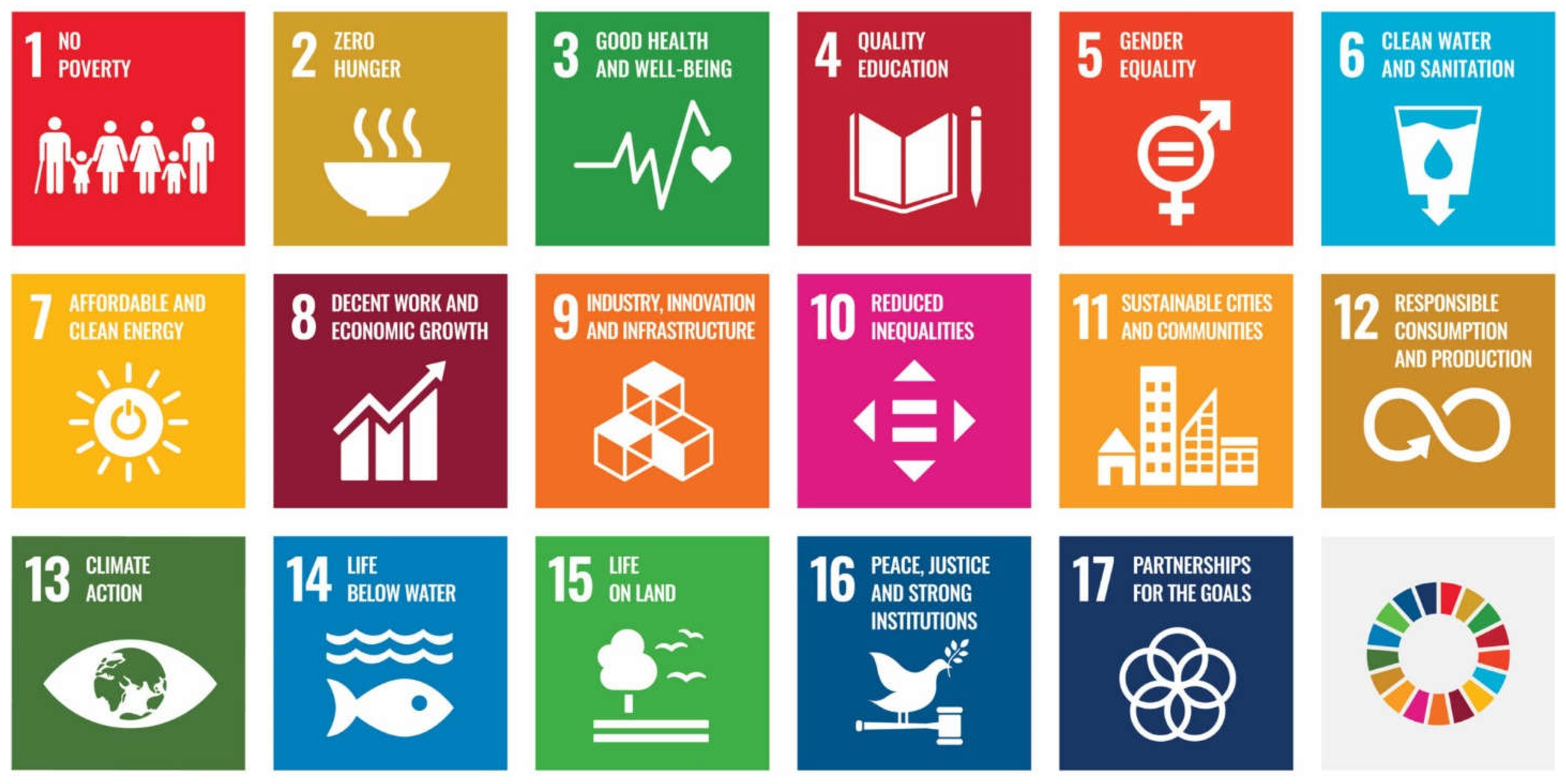
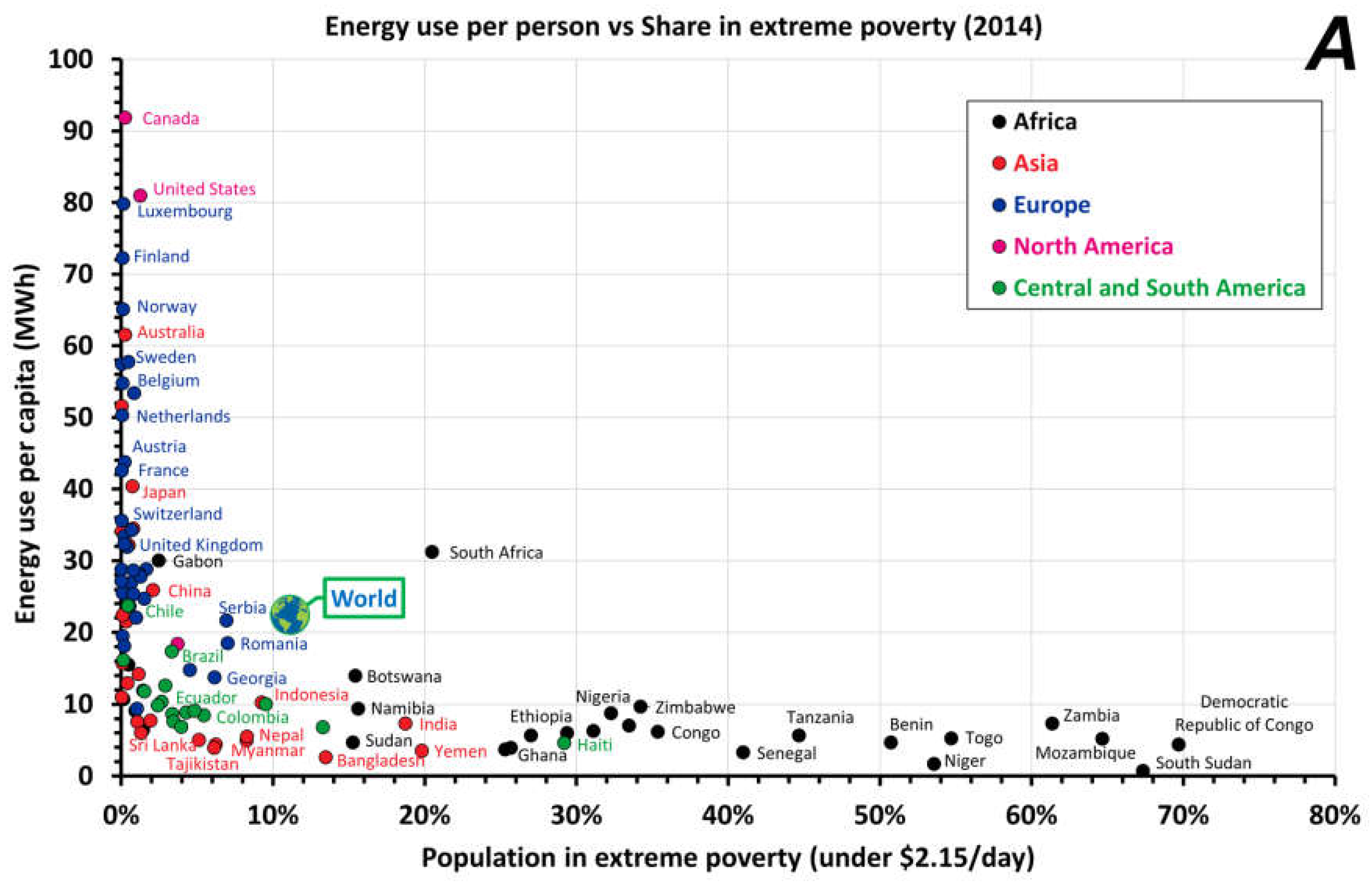
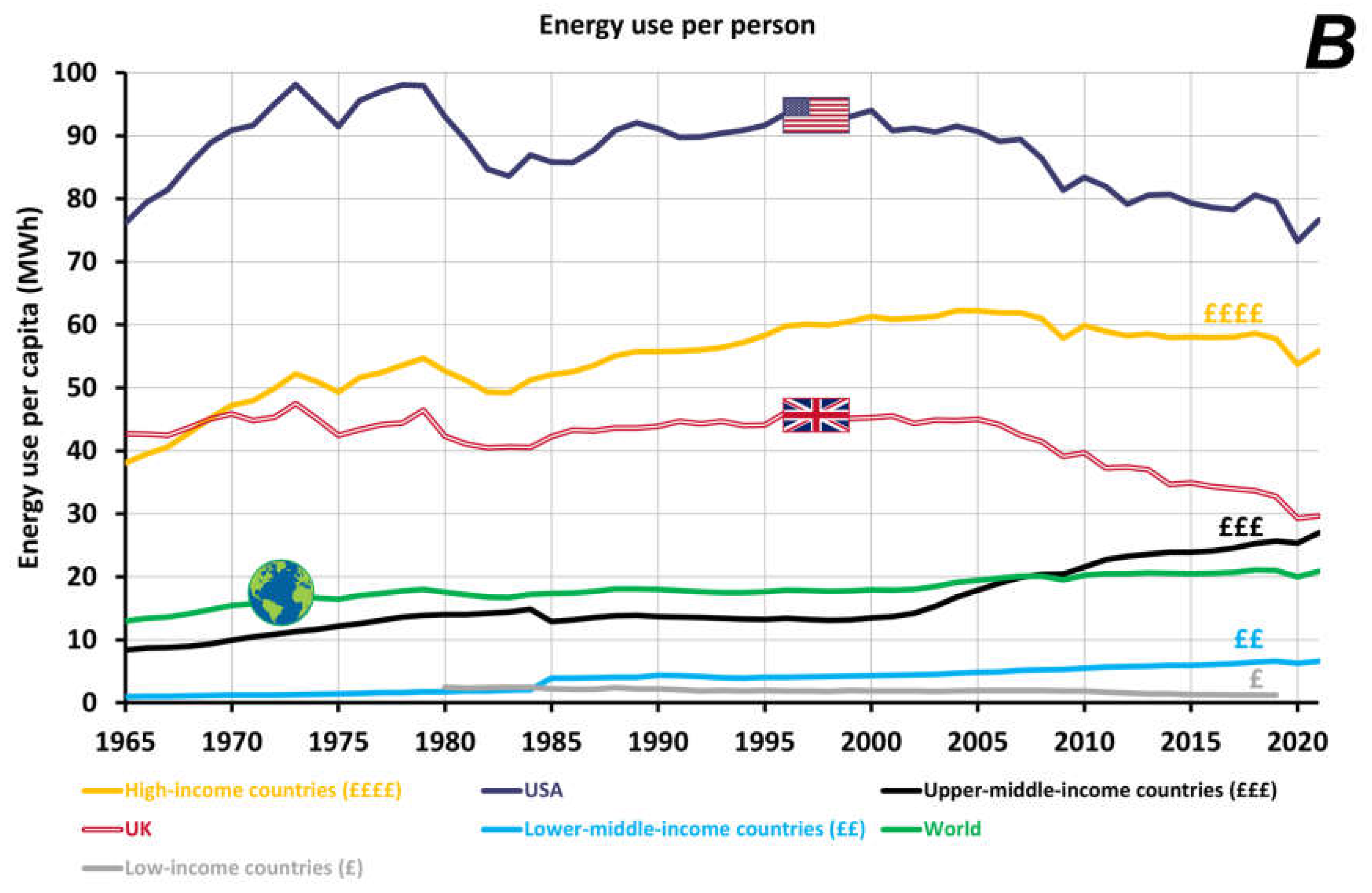
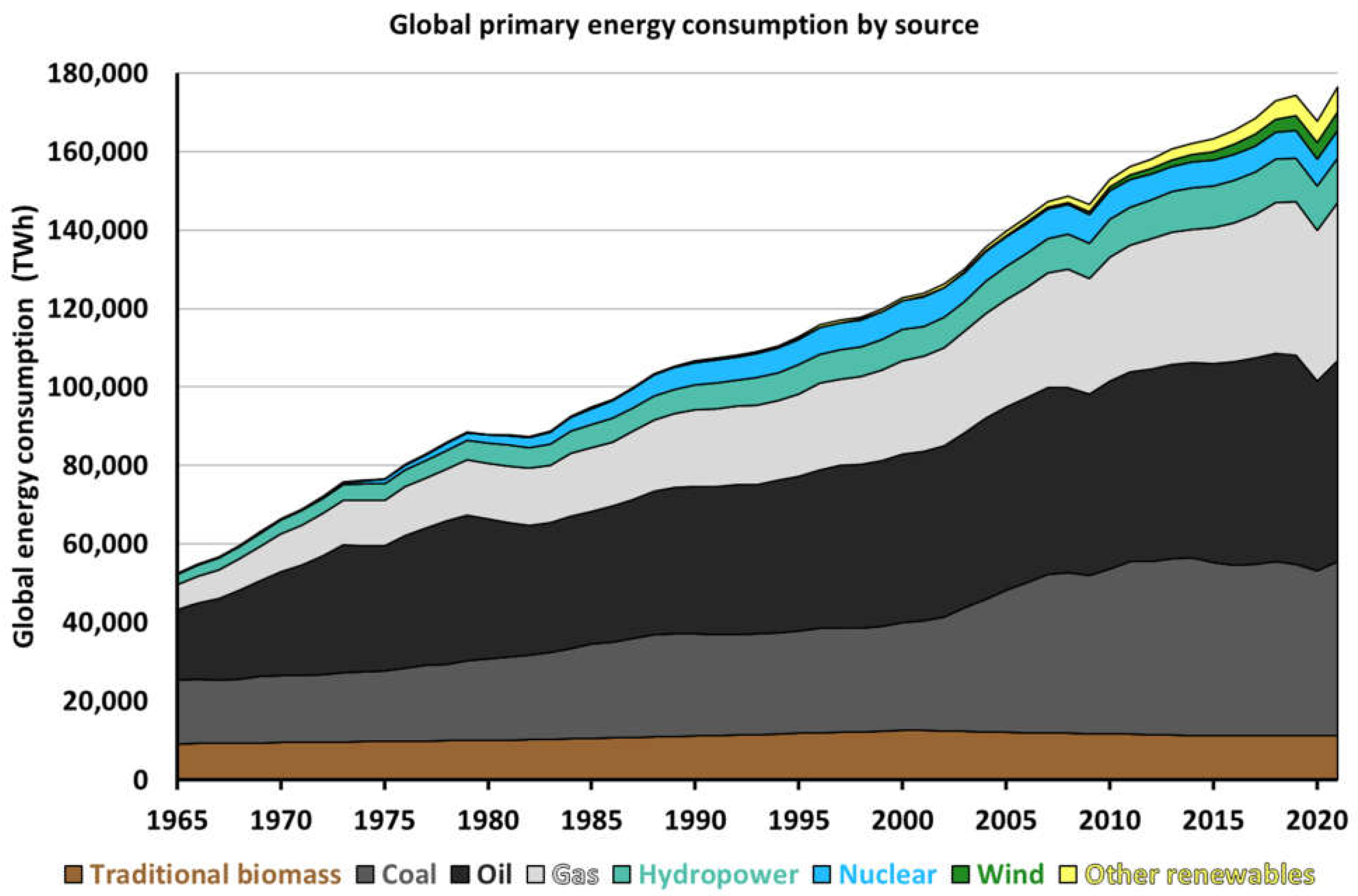
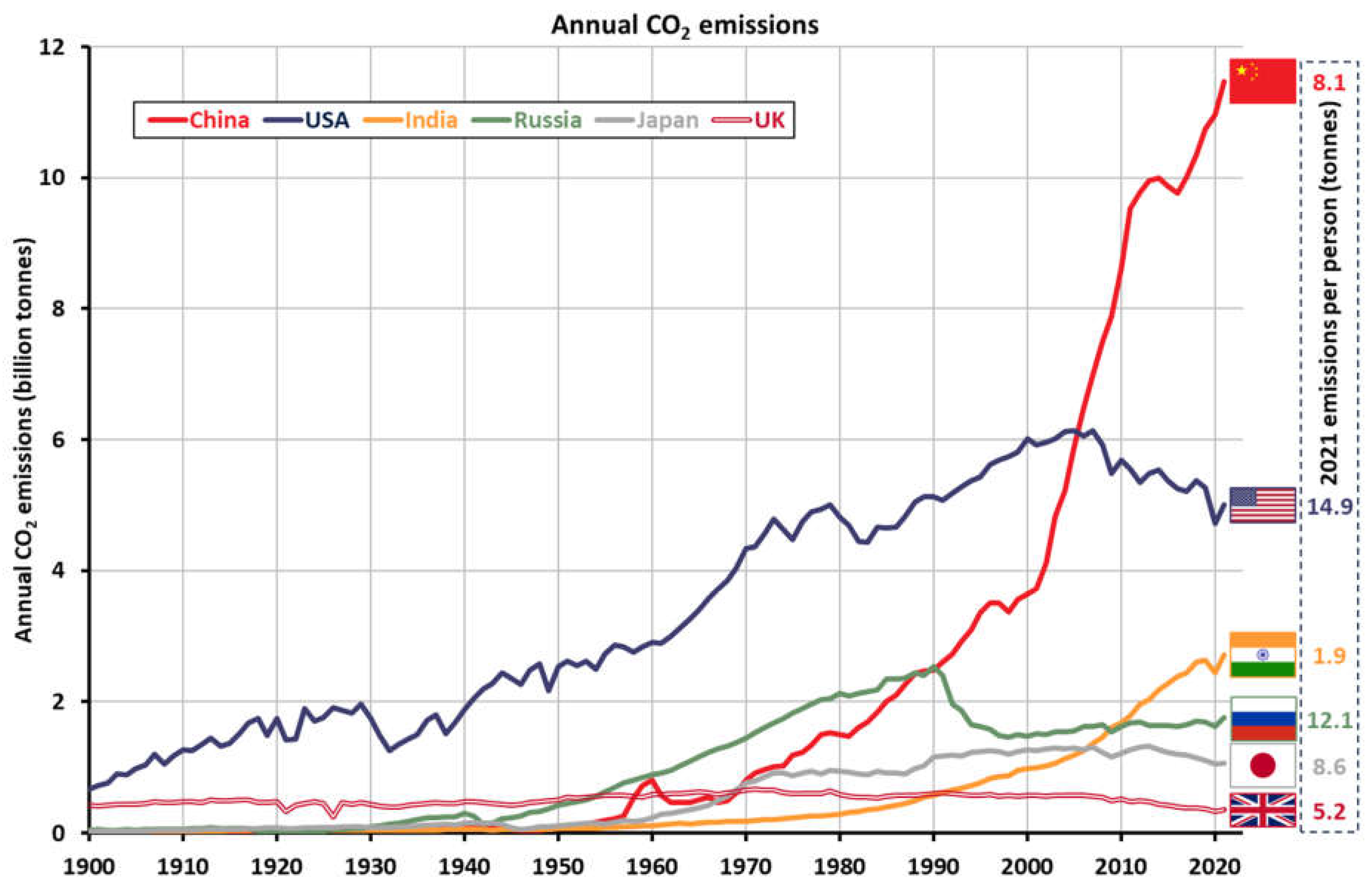
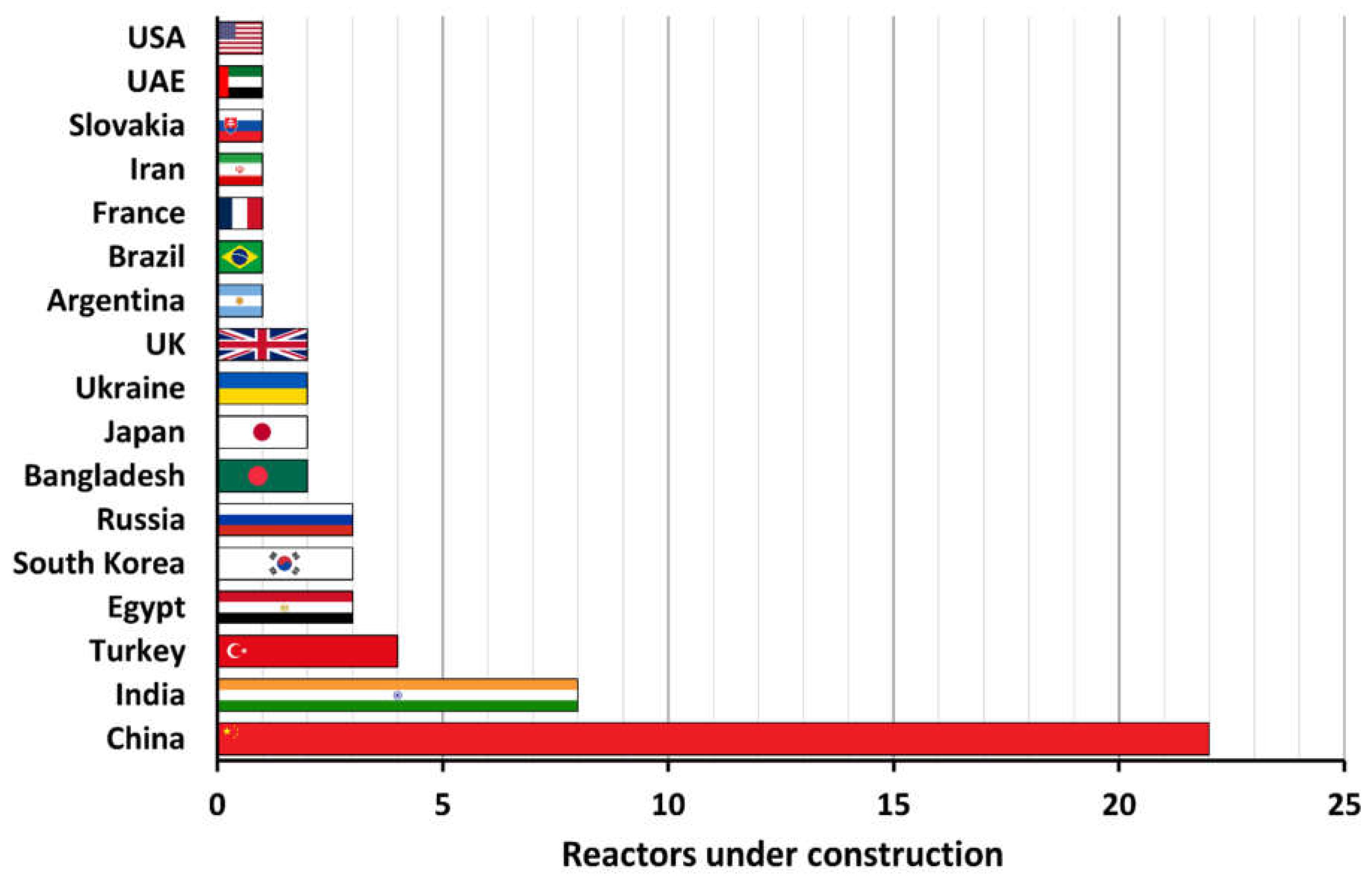
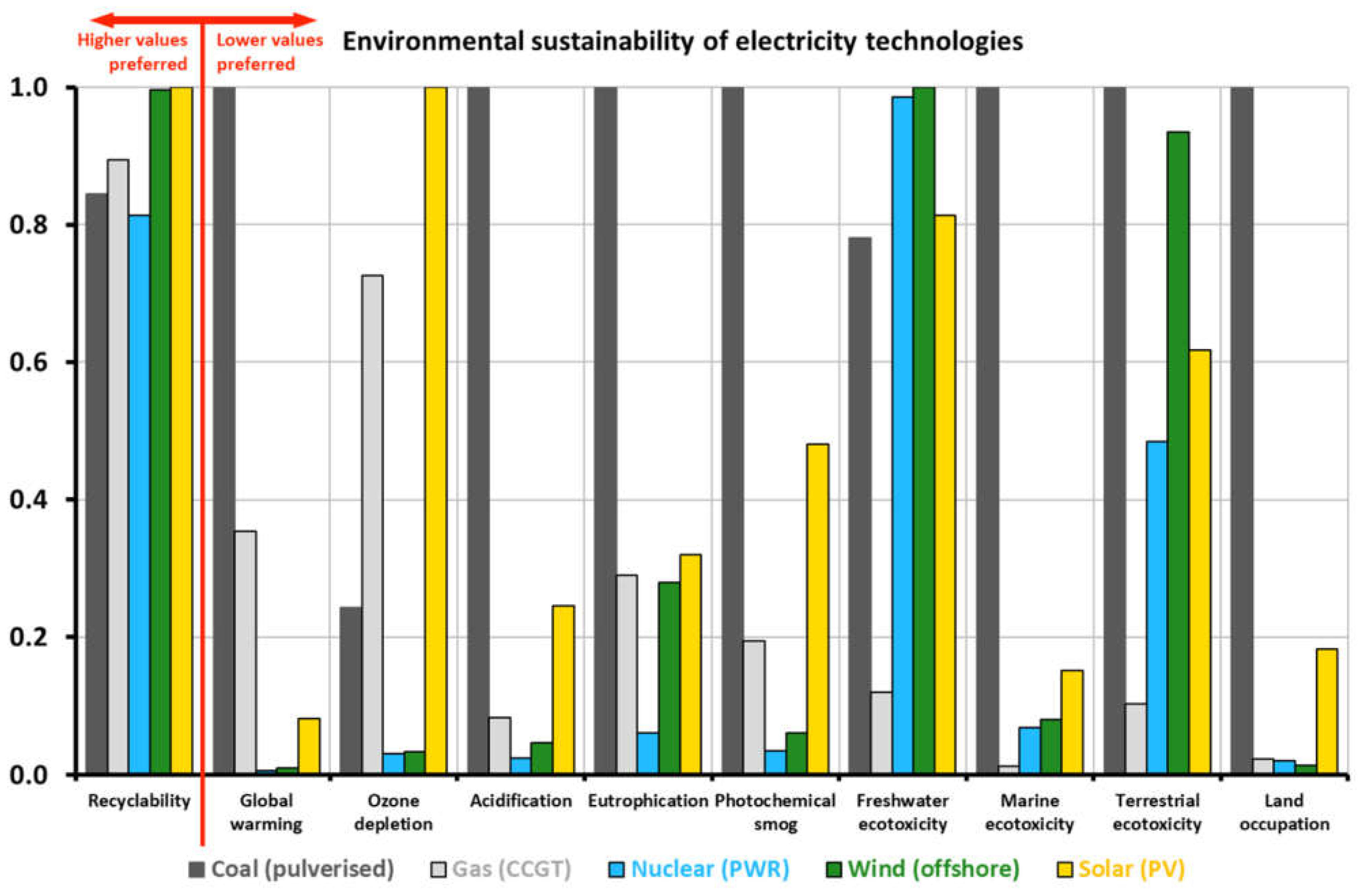
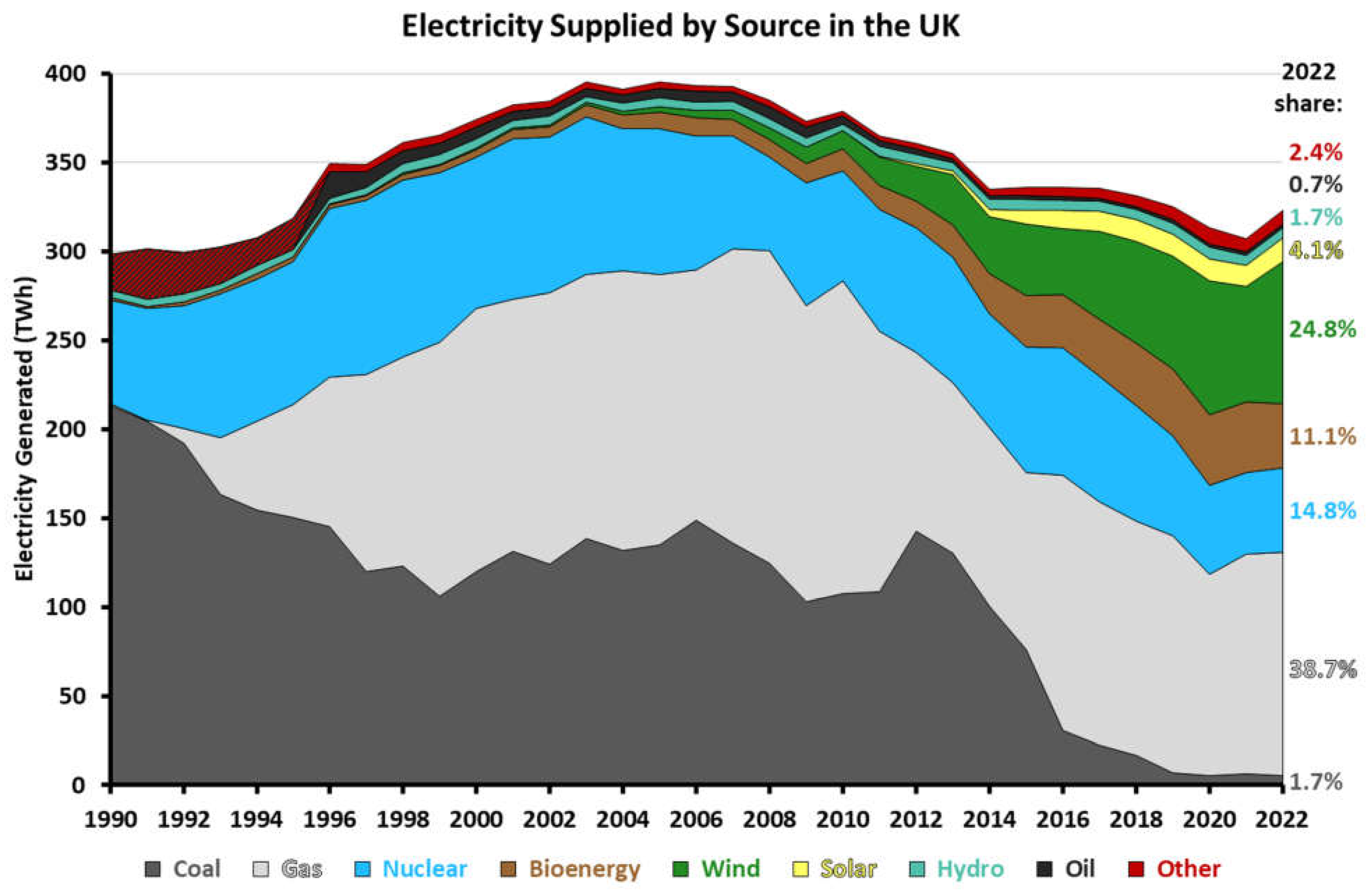
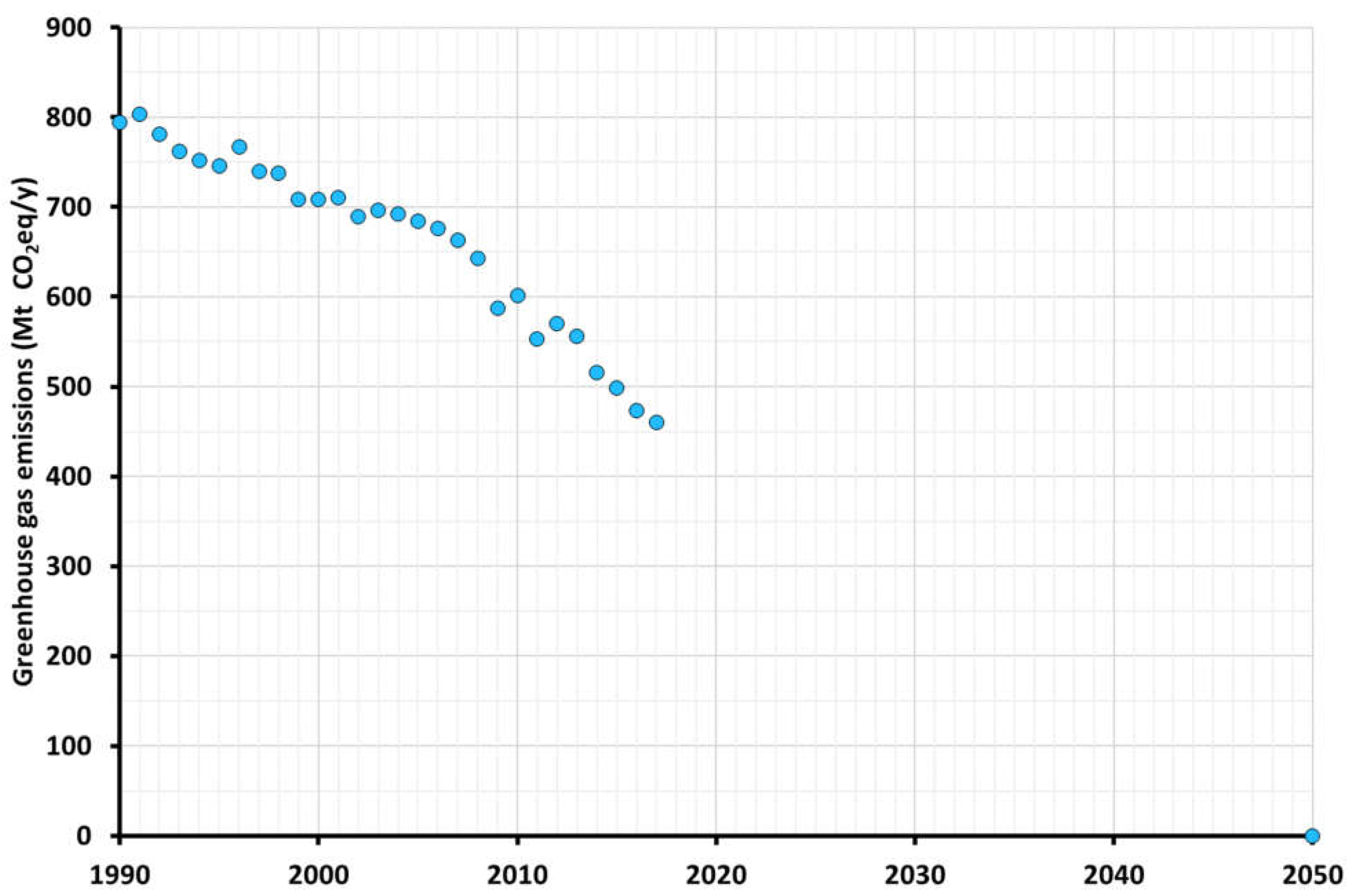

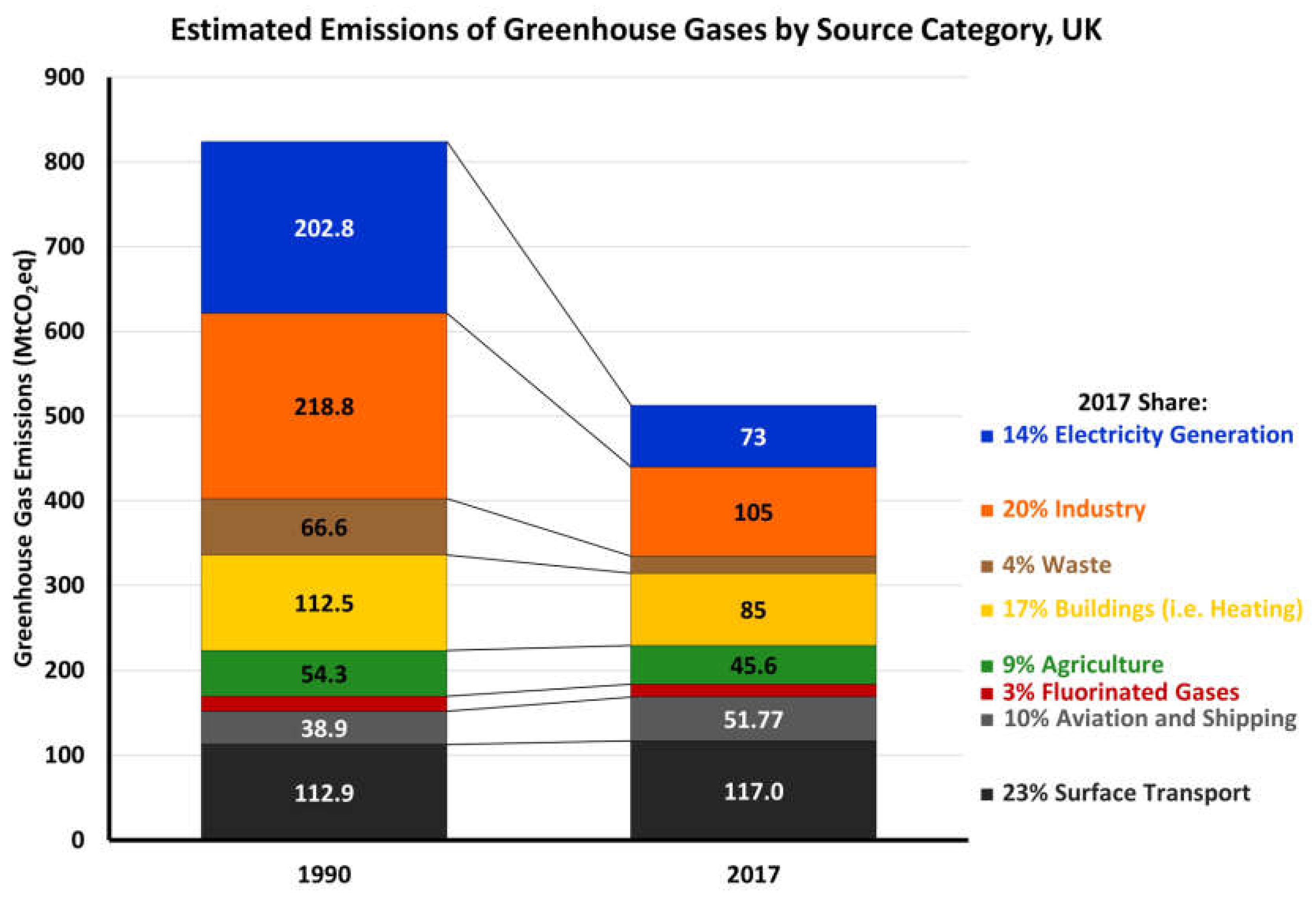


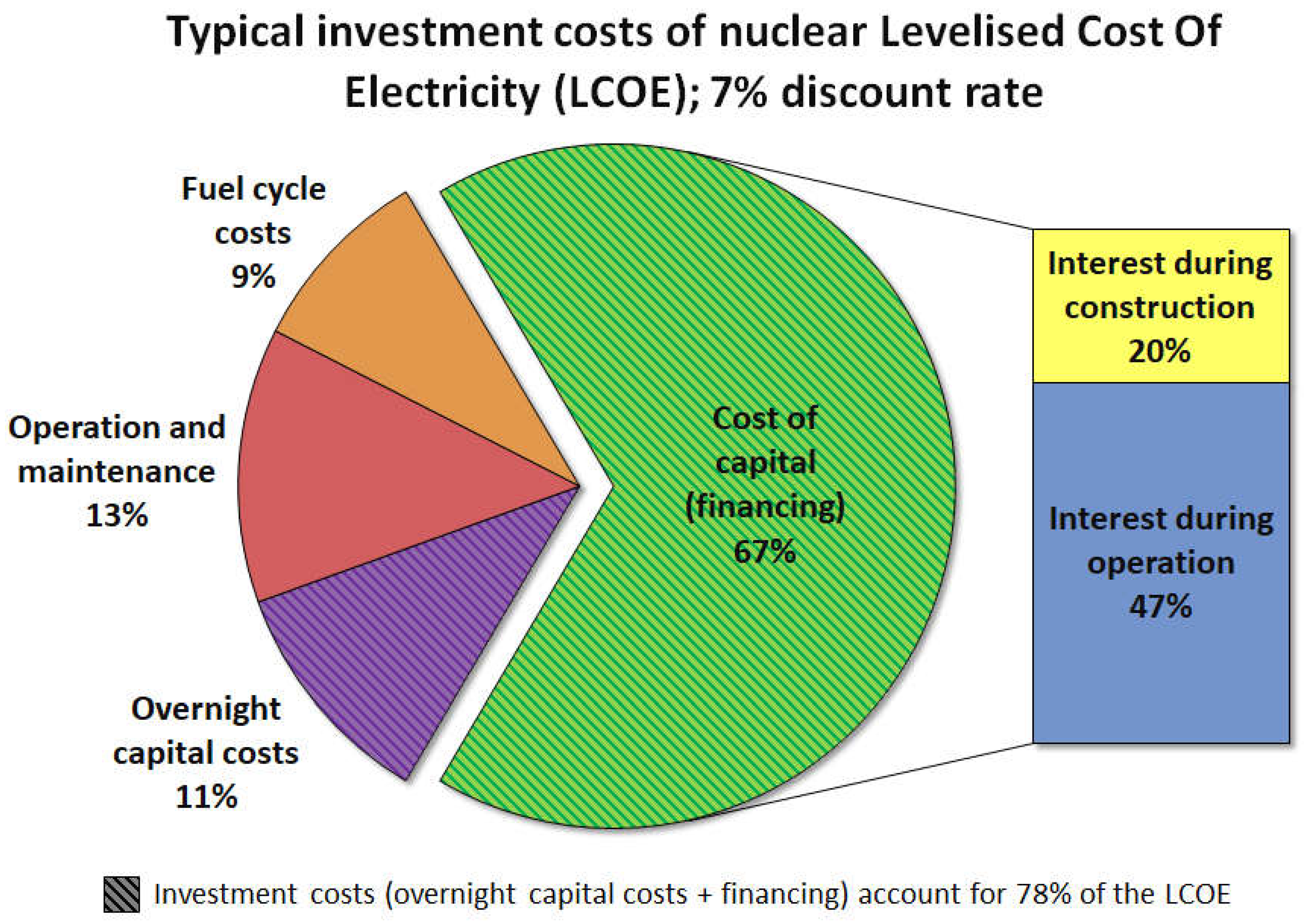
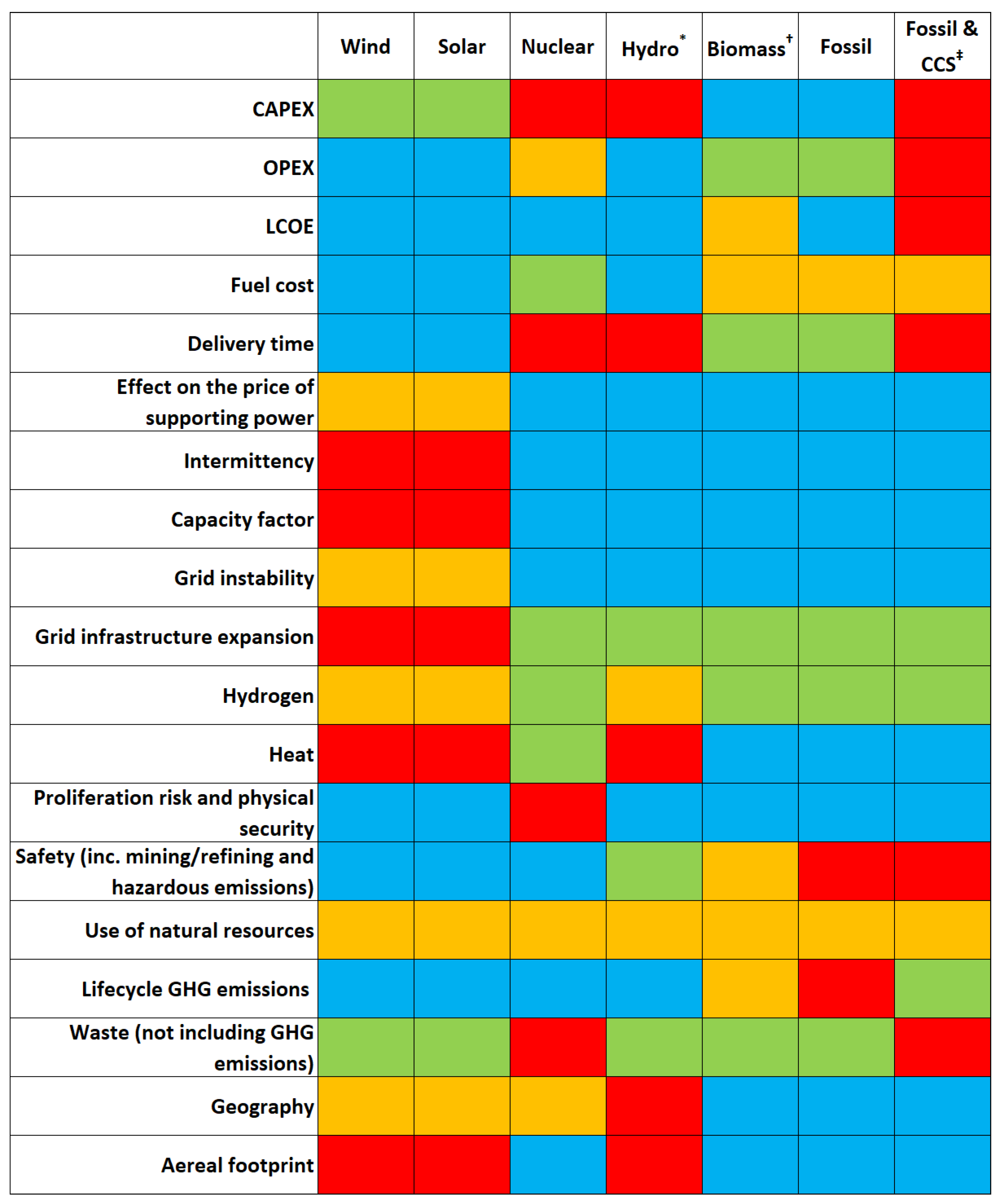
| Target | Indicator | Custodian Agencies | Partner Agencies |
|---|---|---|---|
| 7.1: By 2030, ensure universal access to affordable, reliable, and modern energy services | 7.1.1: Proportion of population with access to electricity | World Bank | IEA, UN-Energy |
| 7.1.2: Proportion of population with primary reliance on clean fuels and technology | WHO | UN-Energy | |
| 7.2: By 2030, increase substantially the share of renewable energy in the global energy mix | 7.2.1: Renewable energy share in the total final energy consumption | UNSD, IEA, IRENA | World Bank, UN-Energy |
| 7.3: By 2030, double the global rate of improvement in energy efficiency | 7.3.1: Energy intensity measured in terms of primary energy and GDP | UNSD, IEA | World Bank, UN-Energy |
| 7.a: By 2030, enhance international cooperation to facilitate access to clean energy research and technology, including renewable energy, energy efficiency, and advanced and cleaner fossil-fuel technology, and promote investment in energy infrastructure and clean energy technology | 7.a.1: International financial flows to developing countries in support of clean energy research and development and renewable energy production, including in hybrid systems | OECD, IRENA | IEA, UN-Energy, UNEP |
| 7.b: By 2030, expand infrastructure and upgrade technology for supplying modern and sustainable energy services for all in developing countries, in particular least developed countries, small island developing states, and landlocked developing countries, in accordance with their respective programmes of support | 7.b.1: Installed renewable energy-generating capacity in developing countries (W/capita) | IRENA |
| Target | Direct Emissions | Lifecycle Emissions (Including Albedo Effect) |
|---|---|---|
| Min/Median/Max kgCO2eq/MWh | Min/Median/Max kgCO2eq/MWh | |
| Pulverised coal | 670/760/870 | 740/820/910 |
| Biomass—co-firing | n/a * | 620/740/890 † |
| Gas—combined cycle | 350/370/490 | 410/490/650 |
| Biomass—dedicated cycle | n/a * | 130/230/420 ‡ |
| Solar—utility photovoltaic | 0 | 18/48/180 |
| Solar—rooftop photovoltaic | 0 | 26/41/60 |
| Geothermal | 0 | 6.0/38/79 |
| Concentrated power | 0 | 8.8/27/63 |
| Hydropower | 0 | 1.0/24/2200 |
| Nuclear | 0 | 3.7/12/110 |
| Wind—offshore | 0 | 8.0/12/35 |
| Wind—onshore | 0 | 7.0/11/56 |
Disclaimer/Publisher’s Note: The statements, opinions and data contained in all publications are solely those of the individual author(s) and contributor(s) and not of MDPI and/or the editor(s). MDPI and/or the editor(s) disclaim responsibility for any injury to people or property resulting from any ideas, methods, instructions or products referred to in the content. |
© 2024 by the authors. Licensee MDPI, Basel, Switzerland. This article is an open access article distributed under the terms and conditions of the Creative Commons Attribution (CC BY) license (https://creativecommons.org/licenses/by/4.0/).
Share and Cite
Taylor, R.; Bodel, W.; Banford, A.; Butler, G.; Livens, F. Sustainability of Nuclear Energy—A Critical Review from a UK Perspective. Sustainability 2024, 16, 10952. https://doi.org/10.3390/su162410952
Taylor R, Bodel W, Banford A, Butler G, Livens F. Sustainability of Nuclear Energy—A Critical Review from a UK Perspective. Sustainability. 2024; 16(24):10952. https://doi.org/10.3390/su162410952
Chicago/Turabian StyleTaylor, Robin, William Bodel, Anthony Banford, Gregg Butler, and Francis Livens. 2024. "Sustainability of Nuclear Energy—A Critical Review from a UK Perspective" Sustainability 16, no. 24: 10952. https://doi.org/10.3390/su162410952
APA StyleTaylor, R., Bodel, W., Banford, A., Butler, G., & Livens, F. (2024). Sustainability of Nuclear Energy—A Critical Review from a UK Perspective. Sustainability, 16(24), 10952. https://doi.org/10.3390/su162410952







